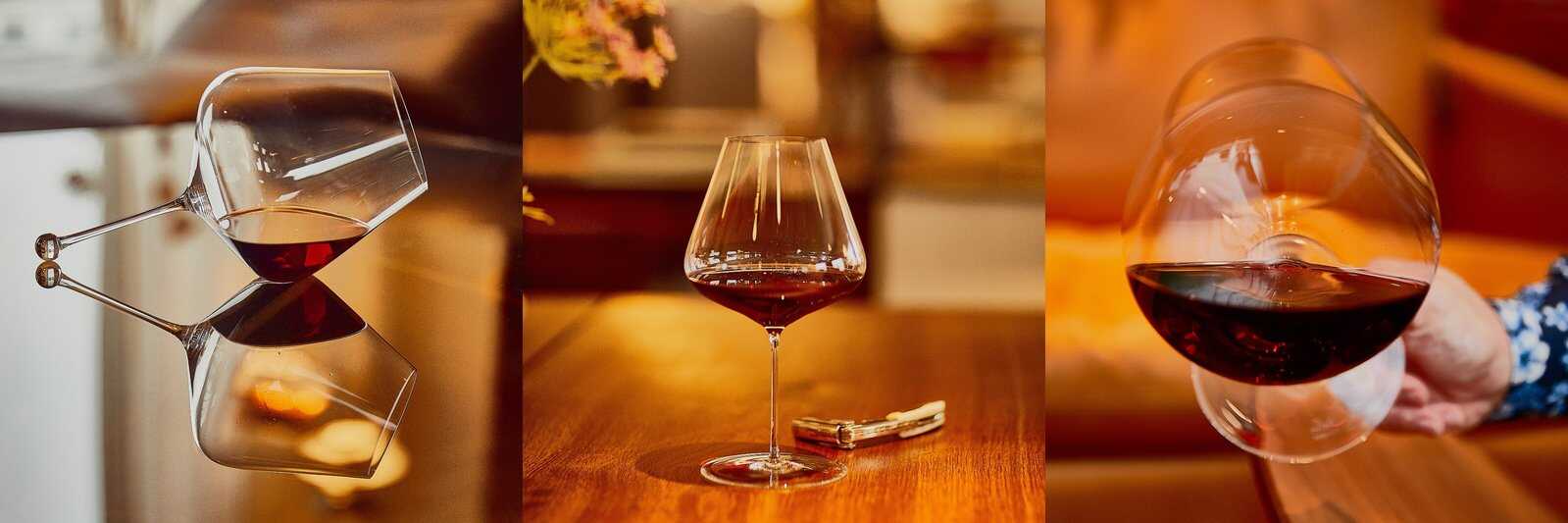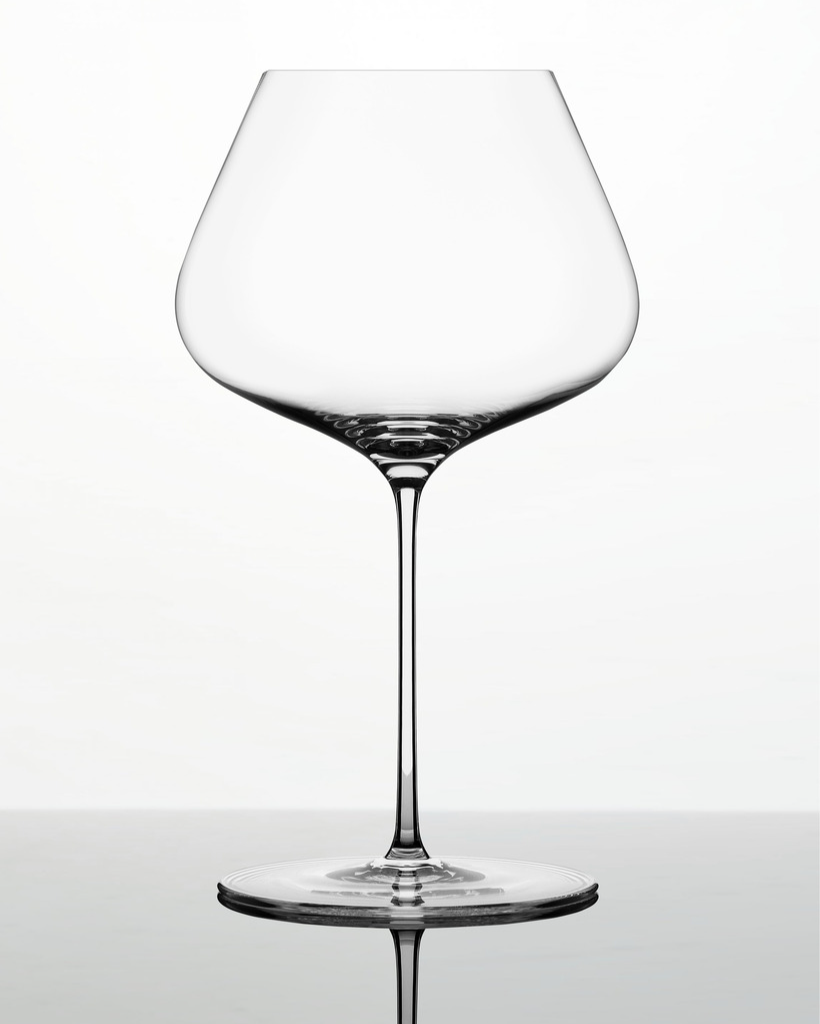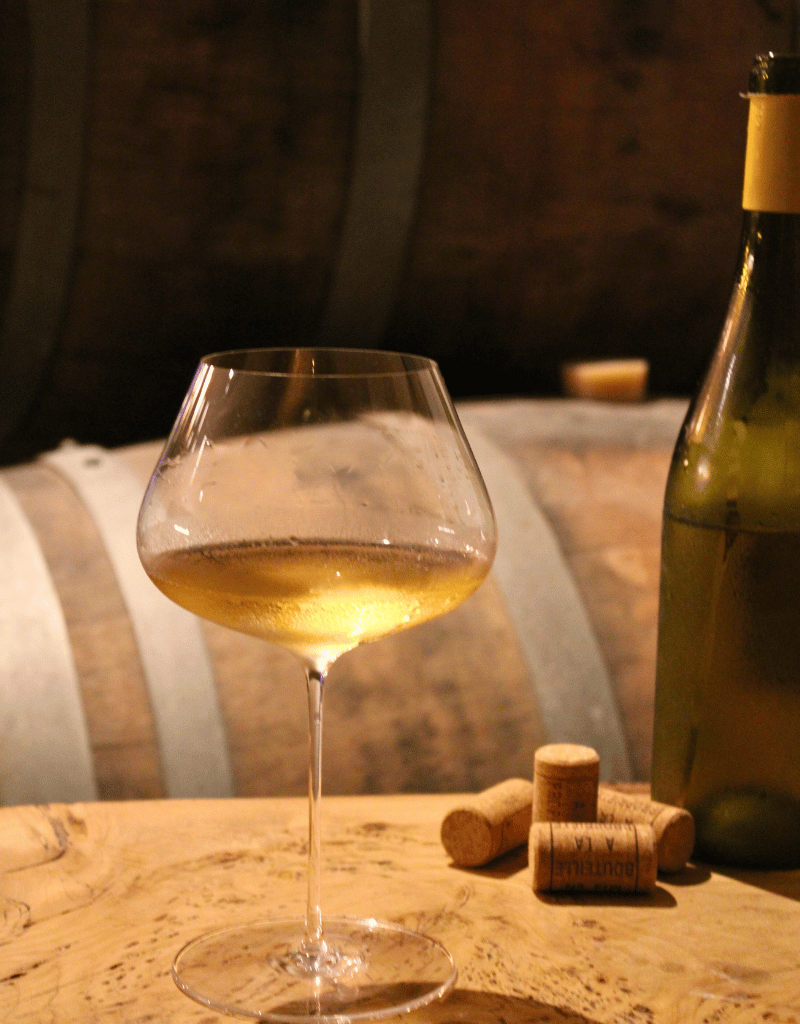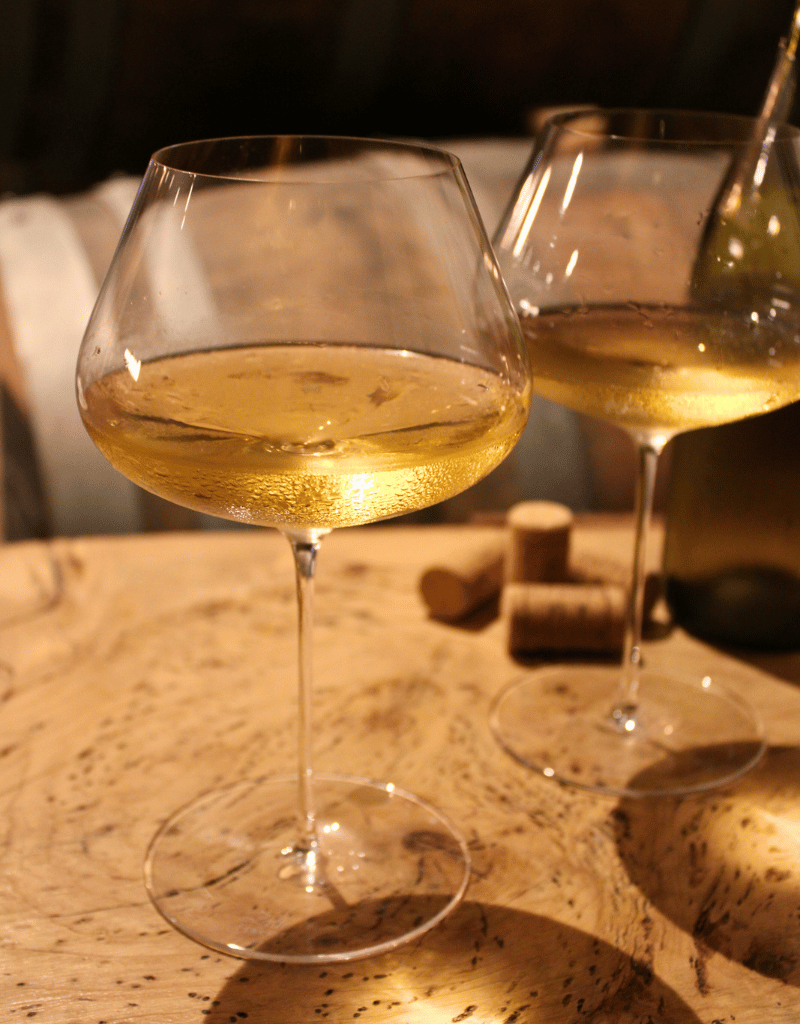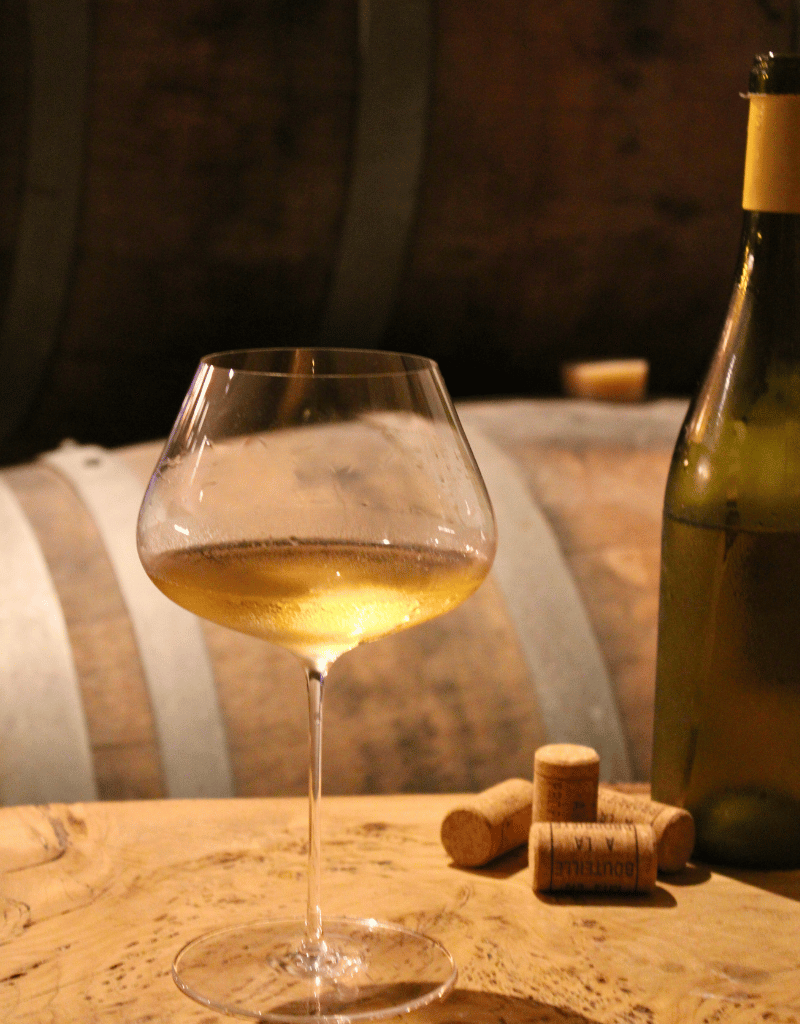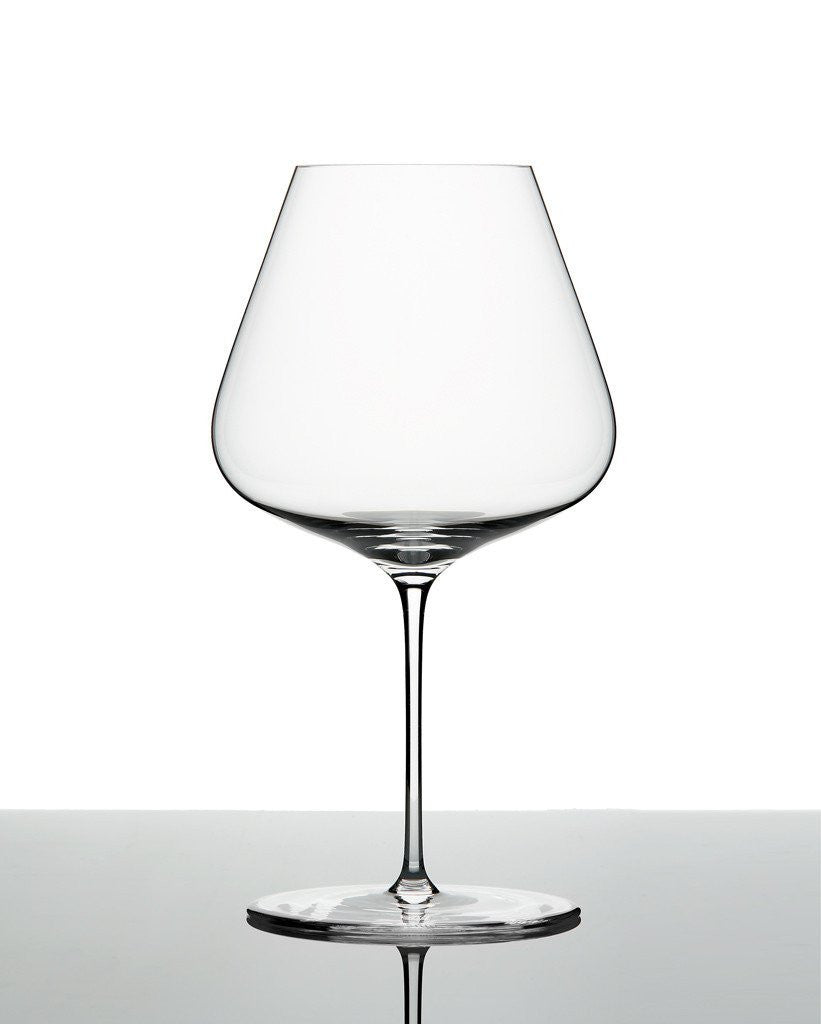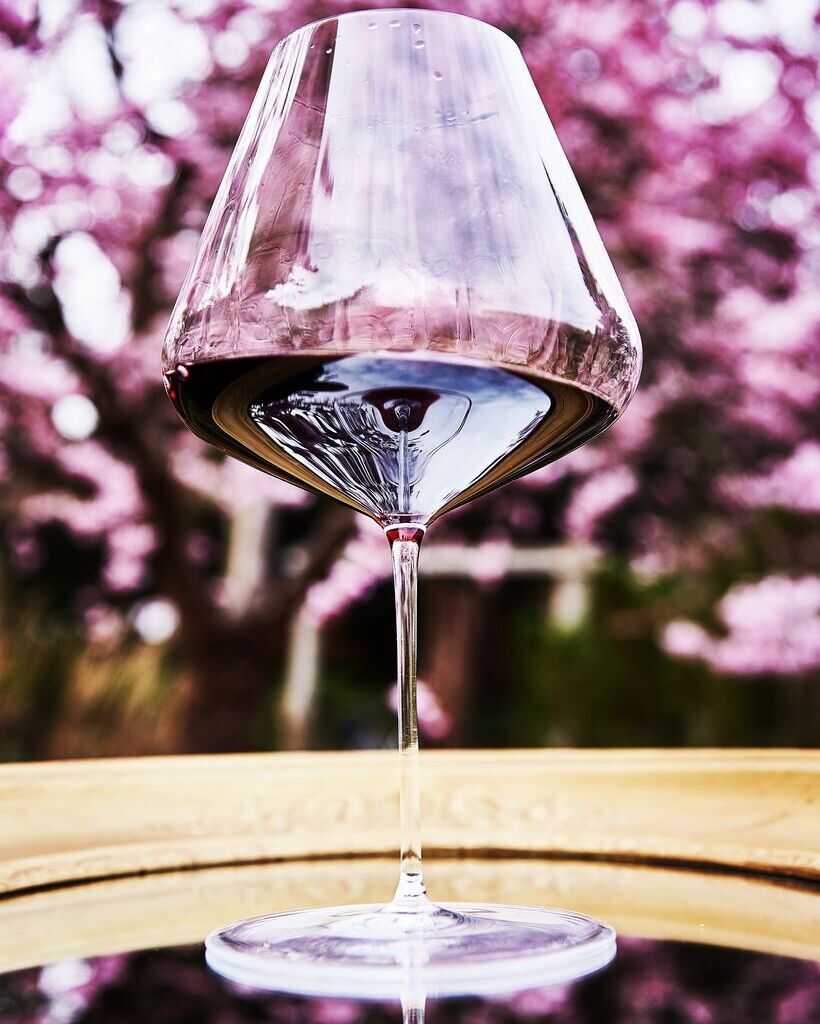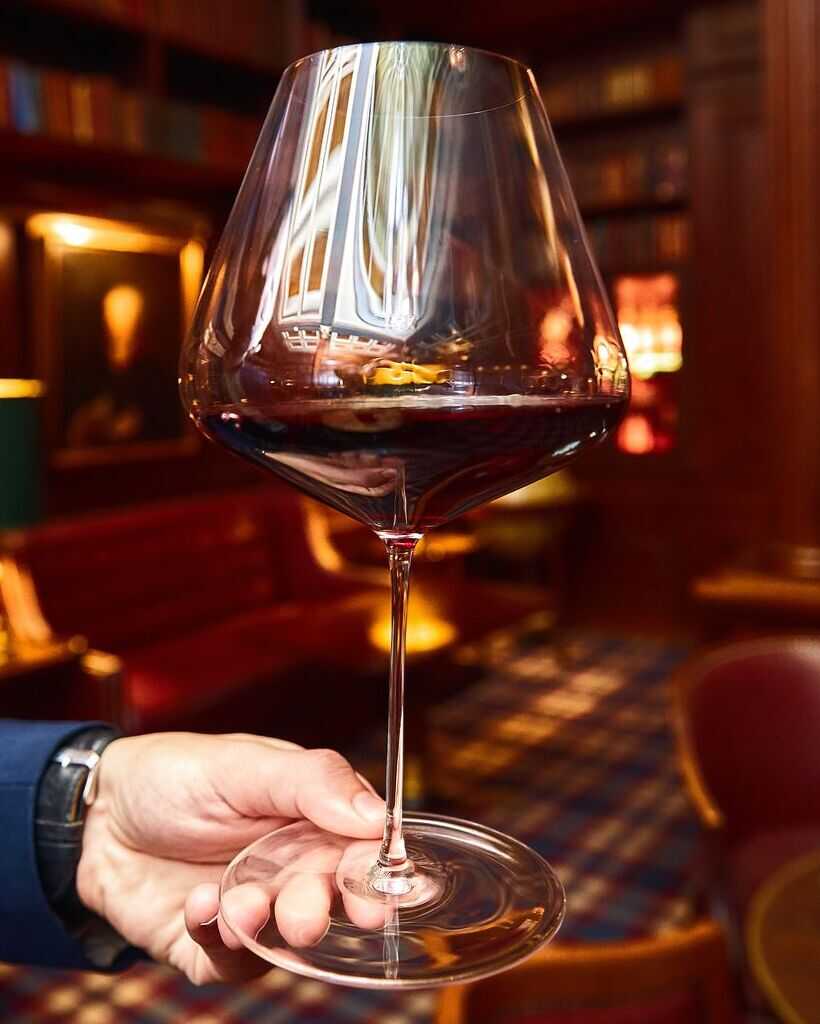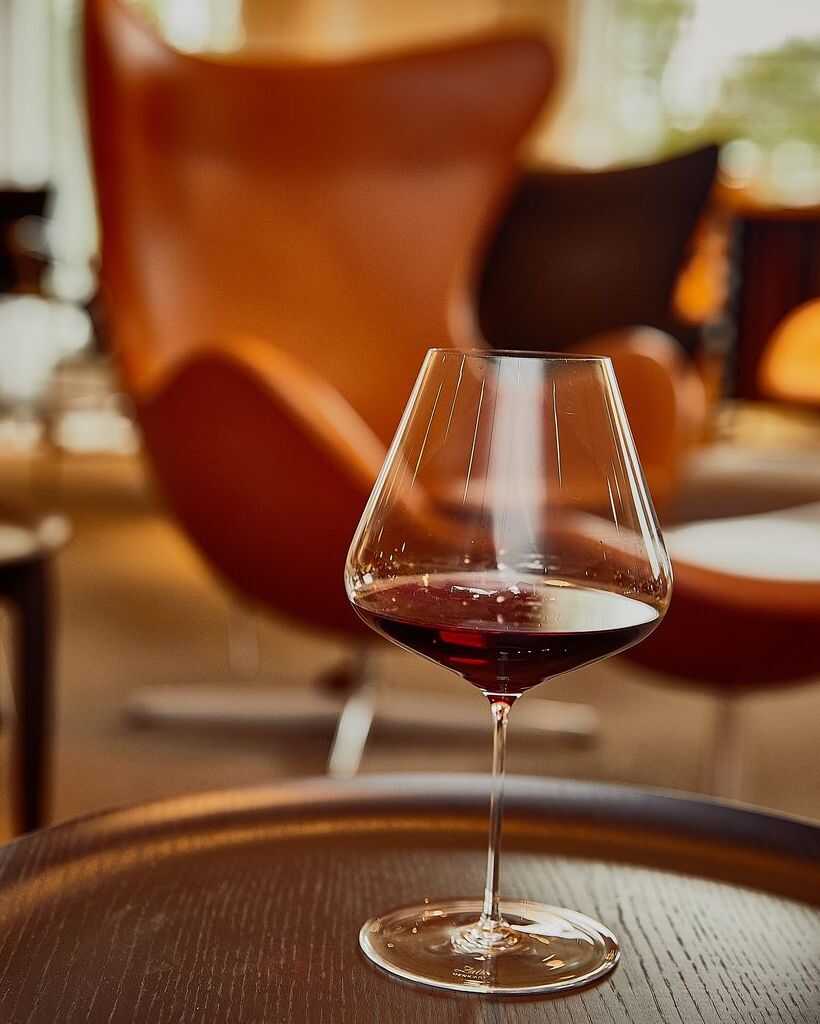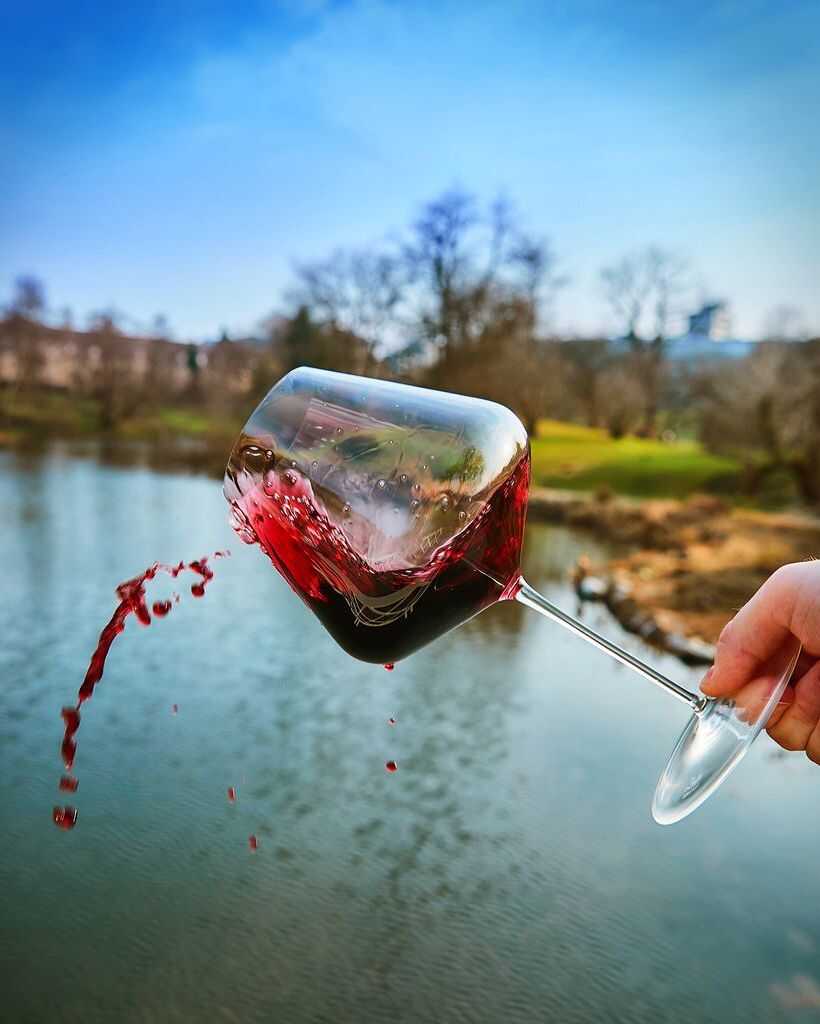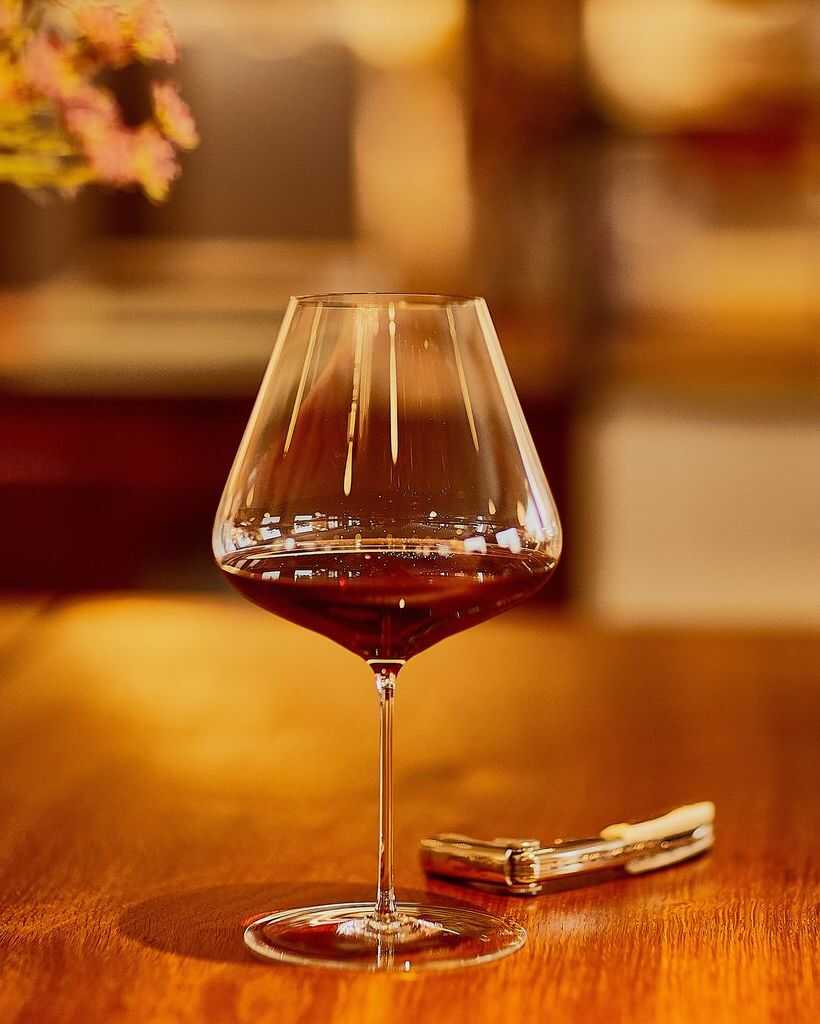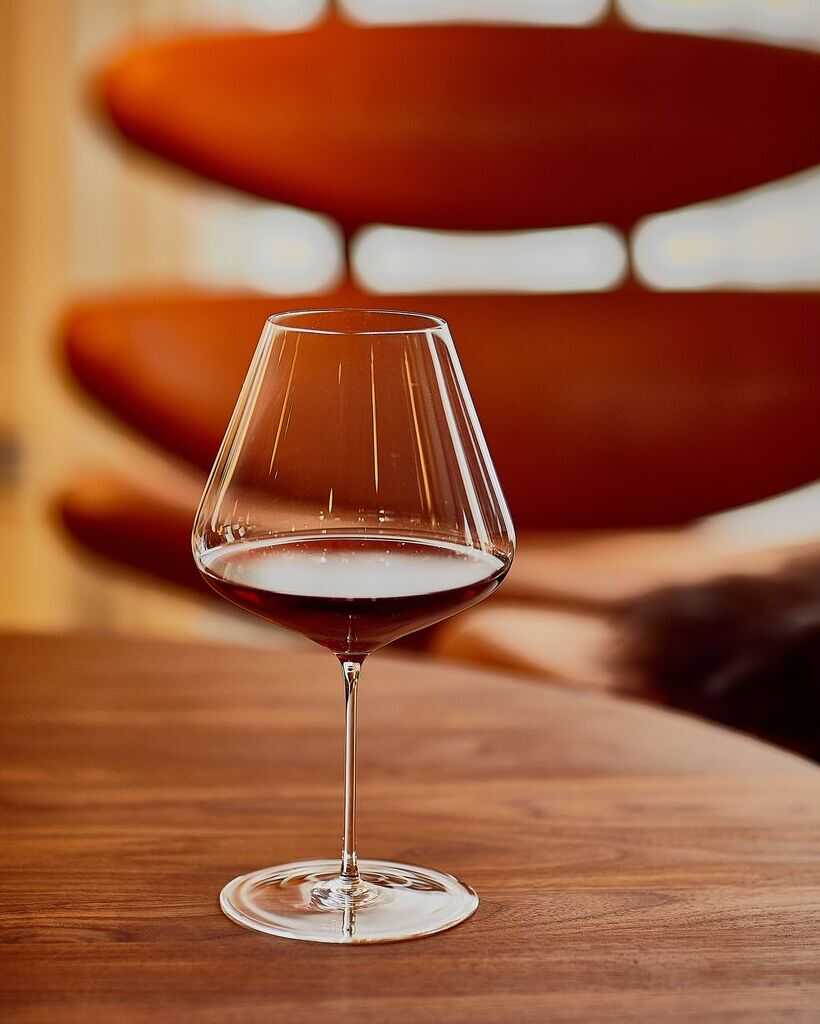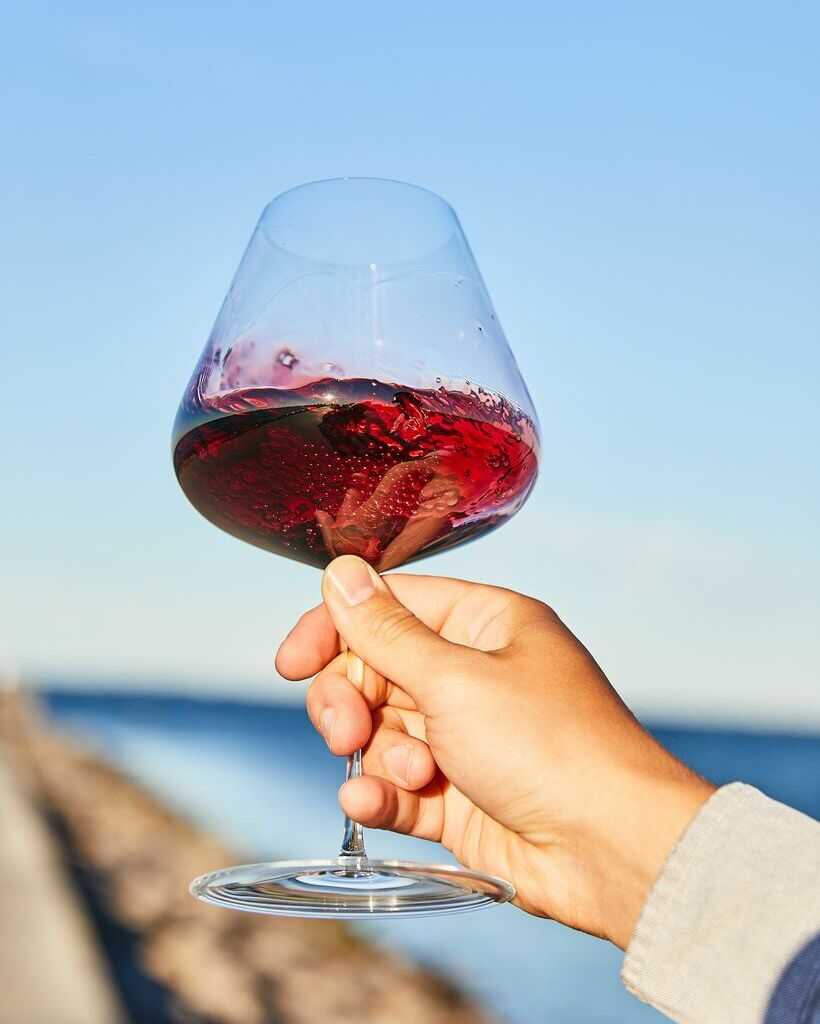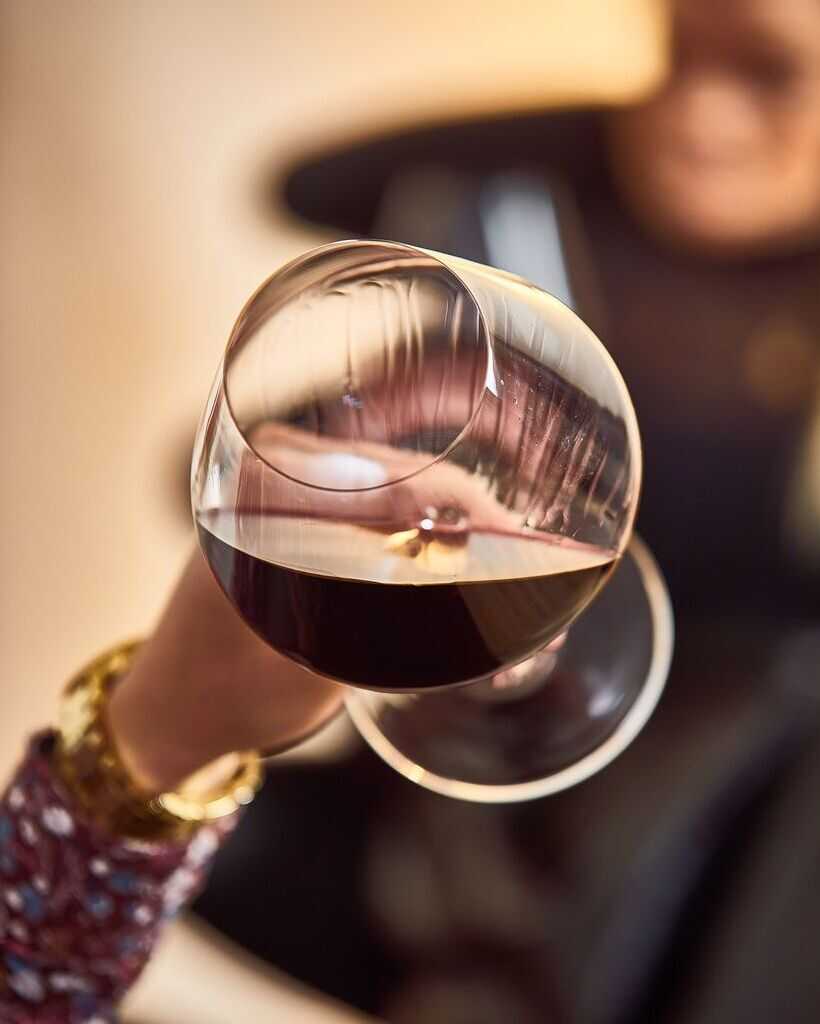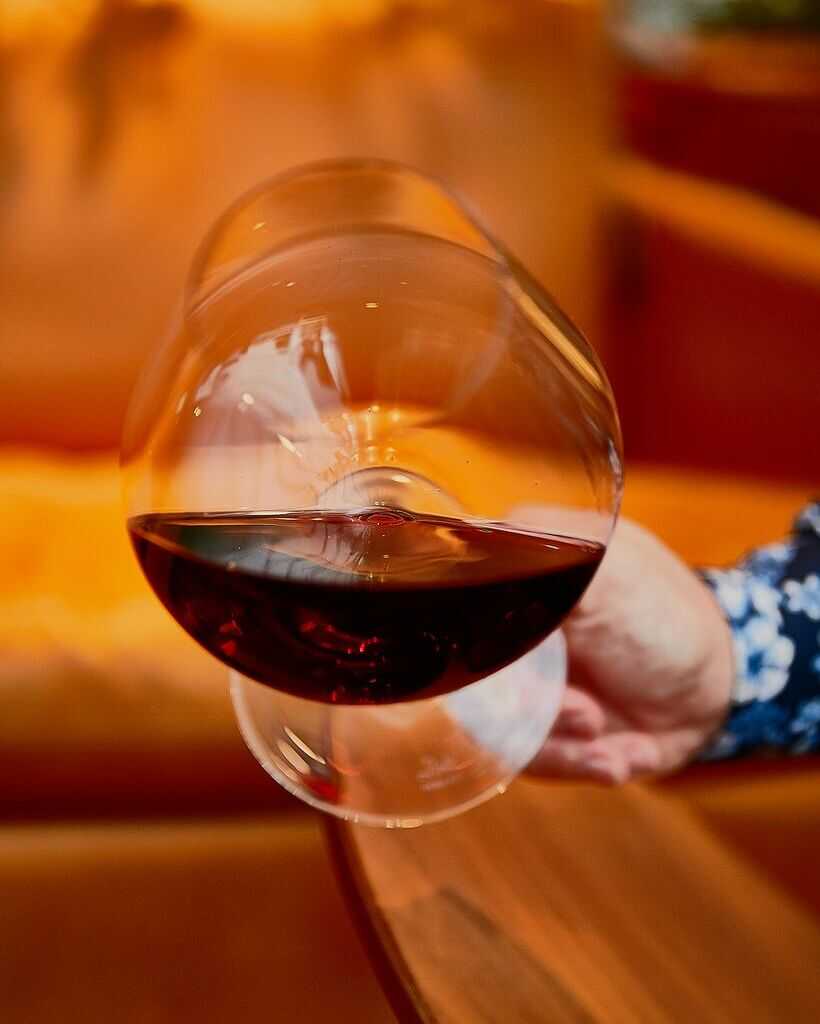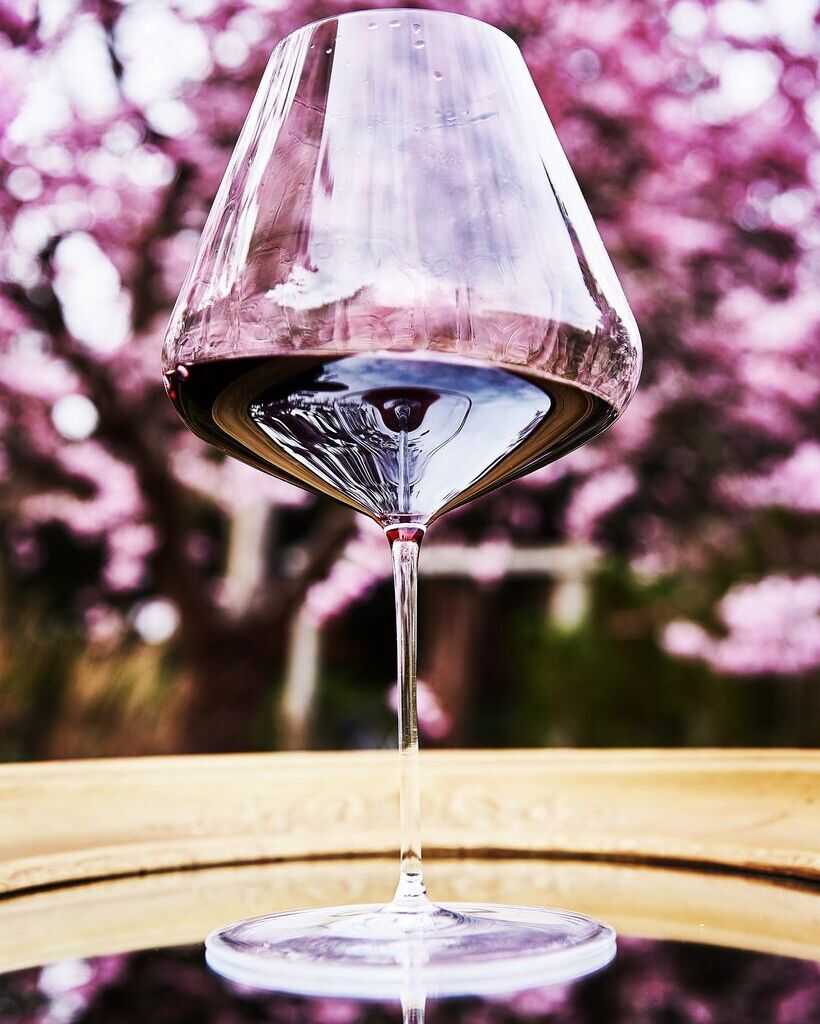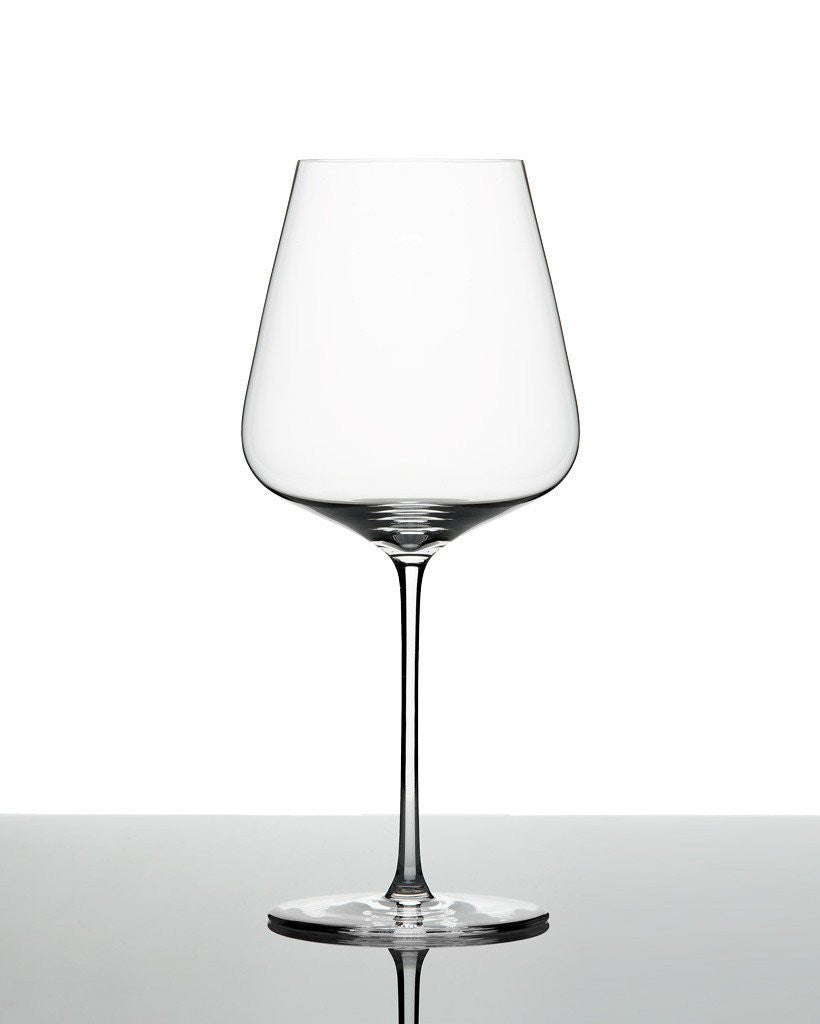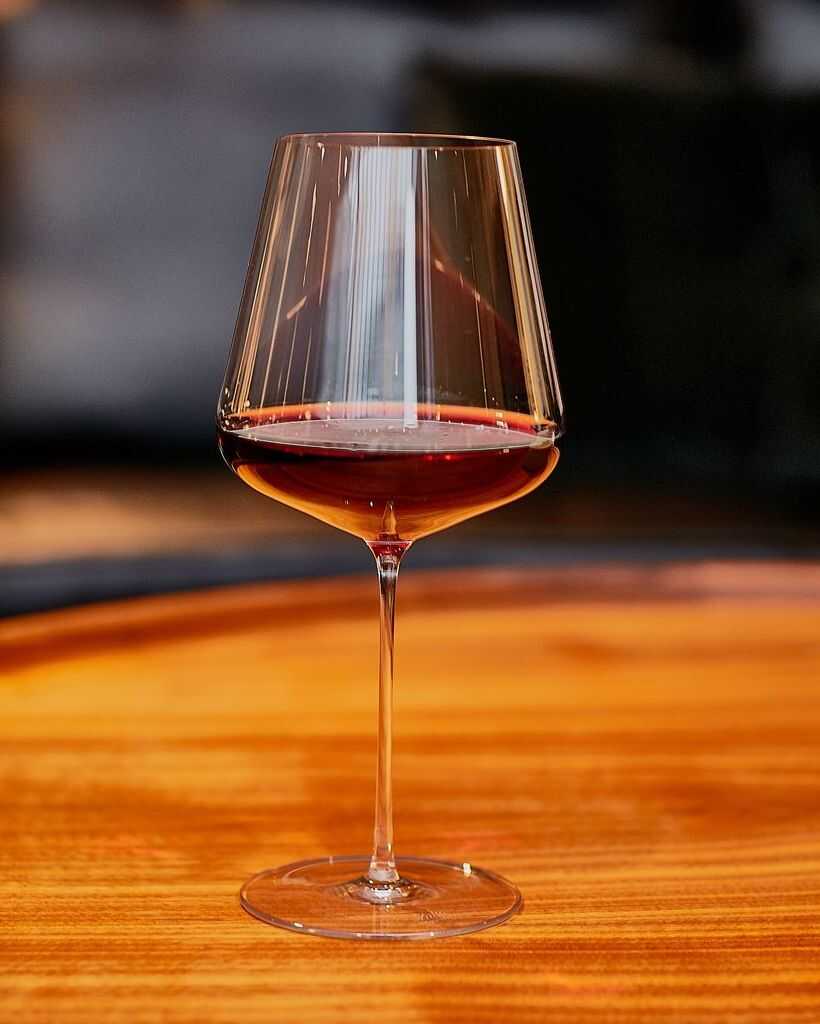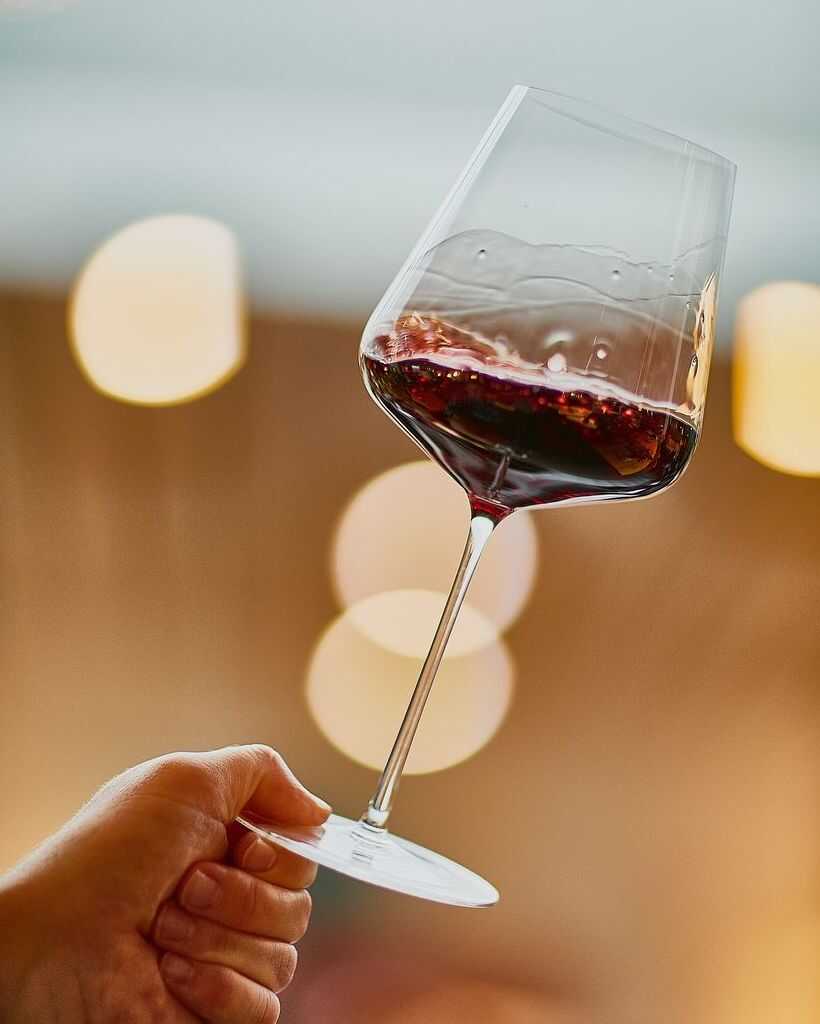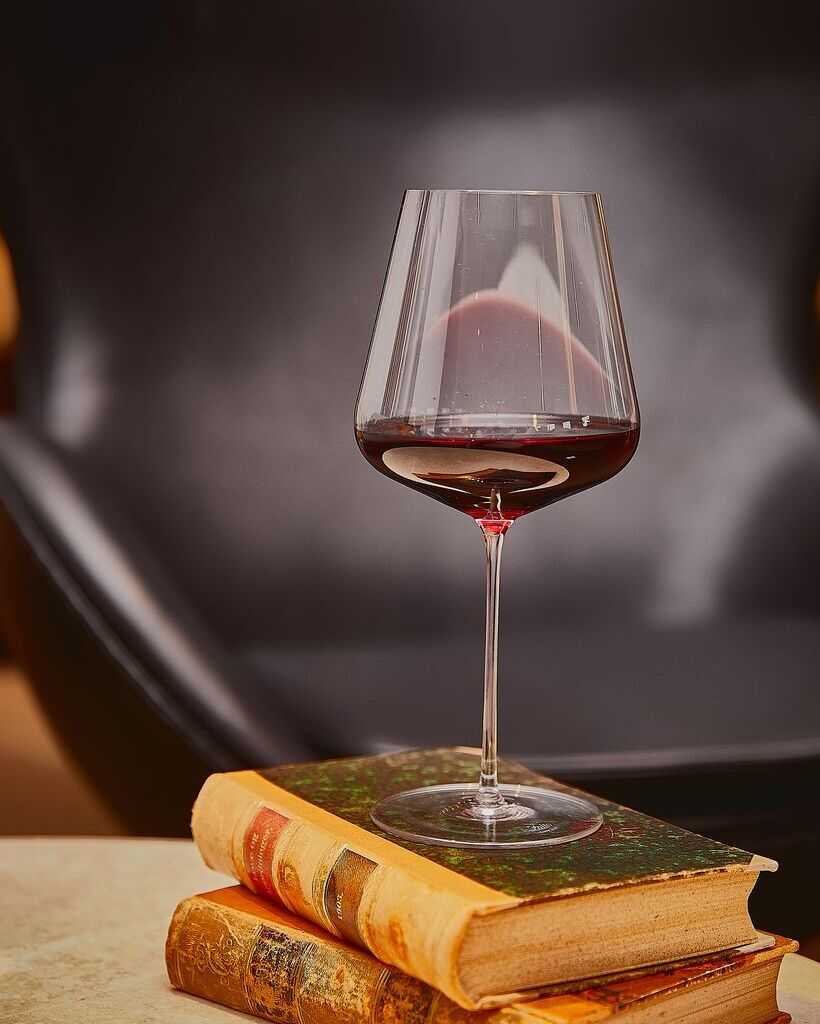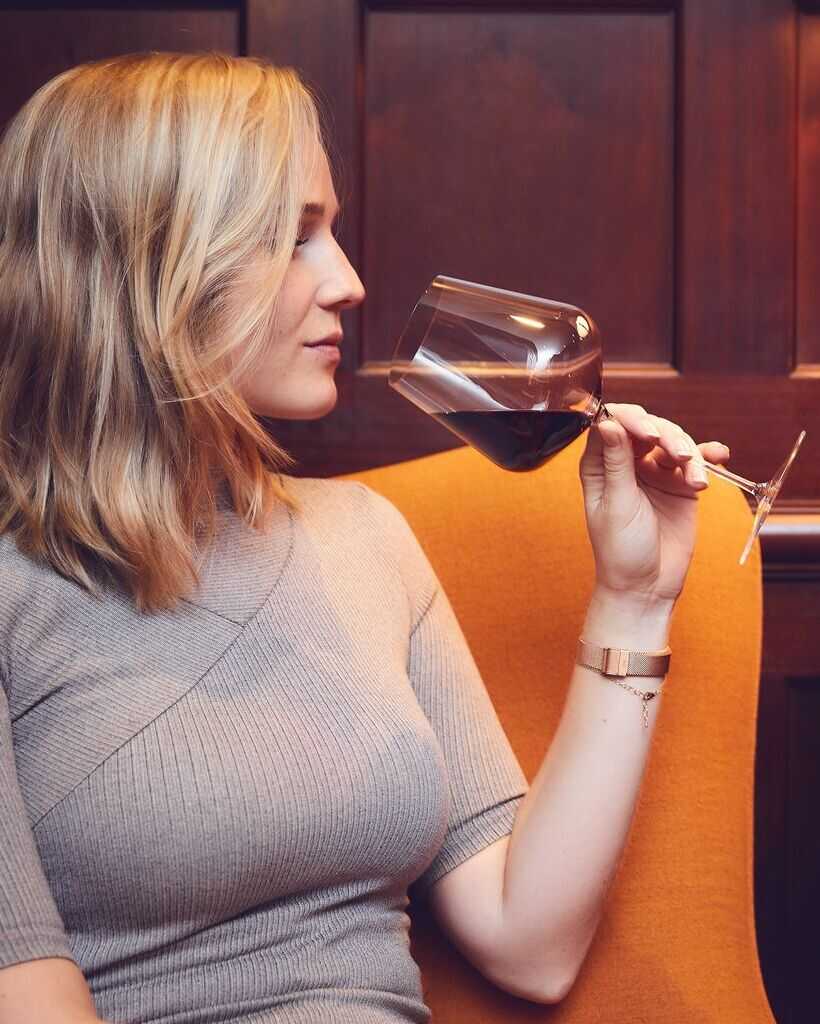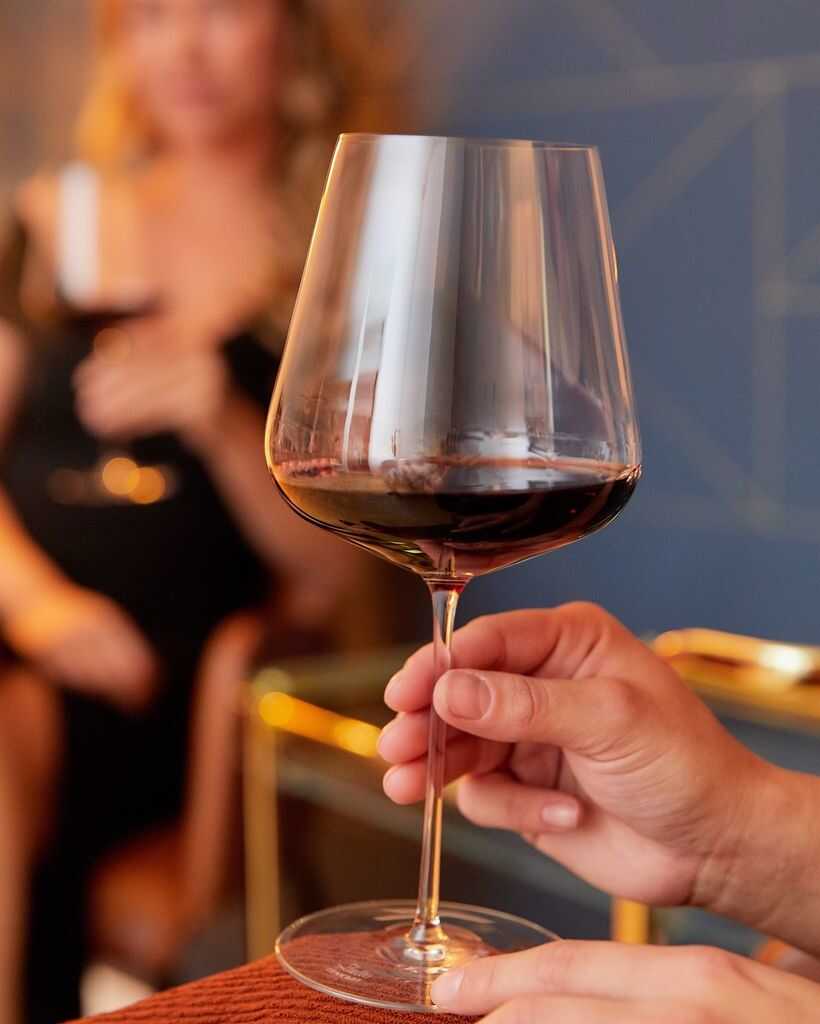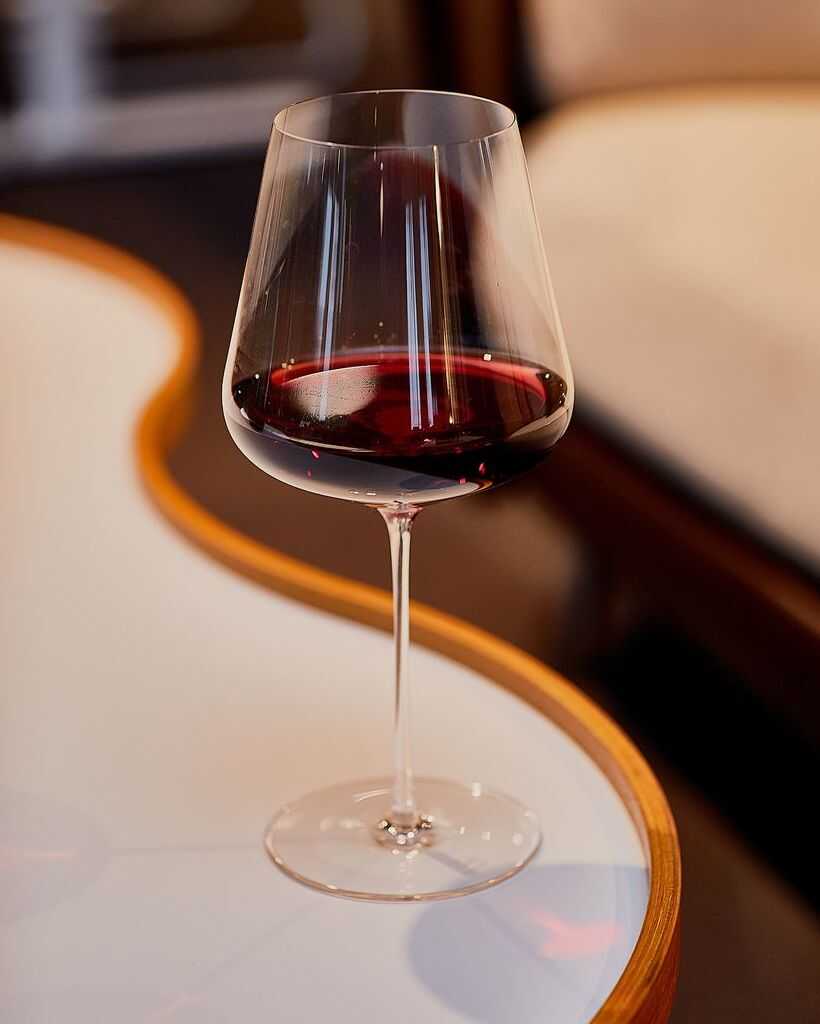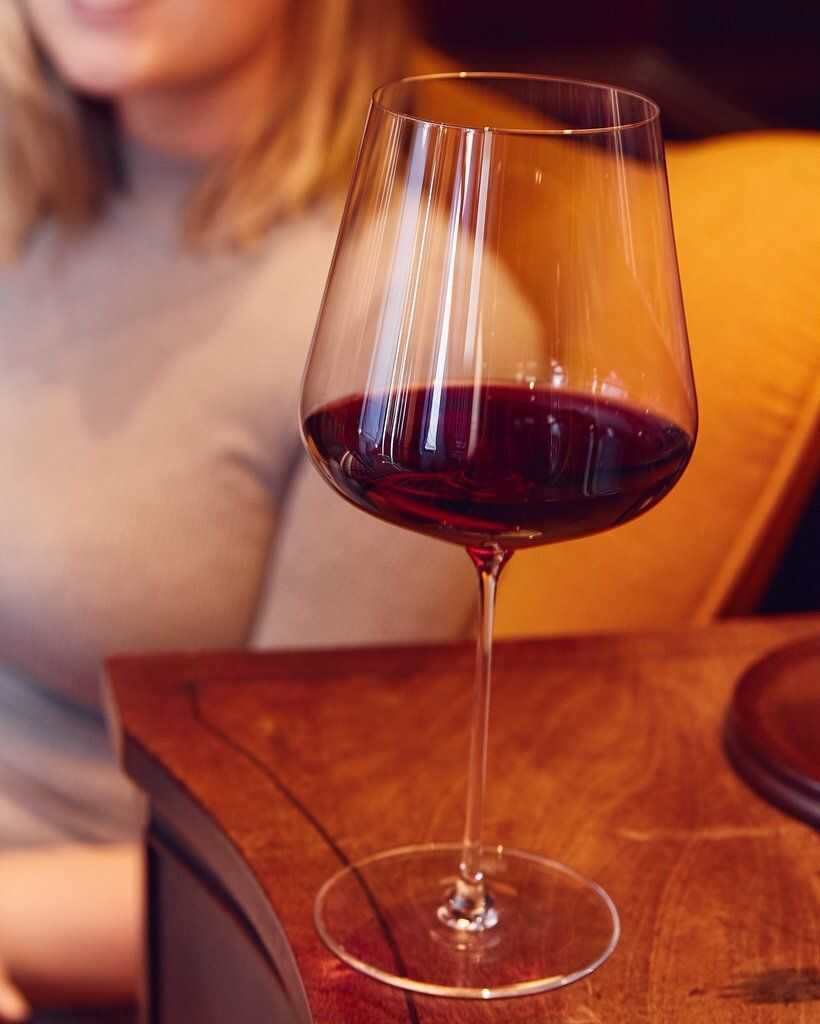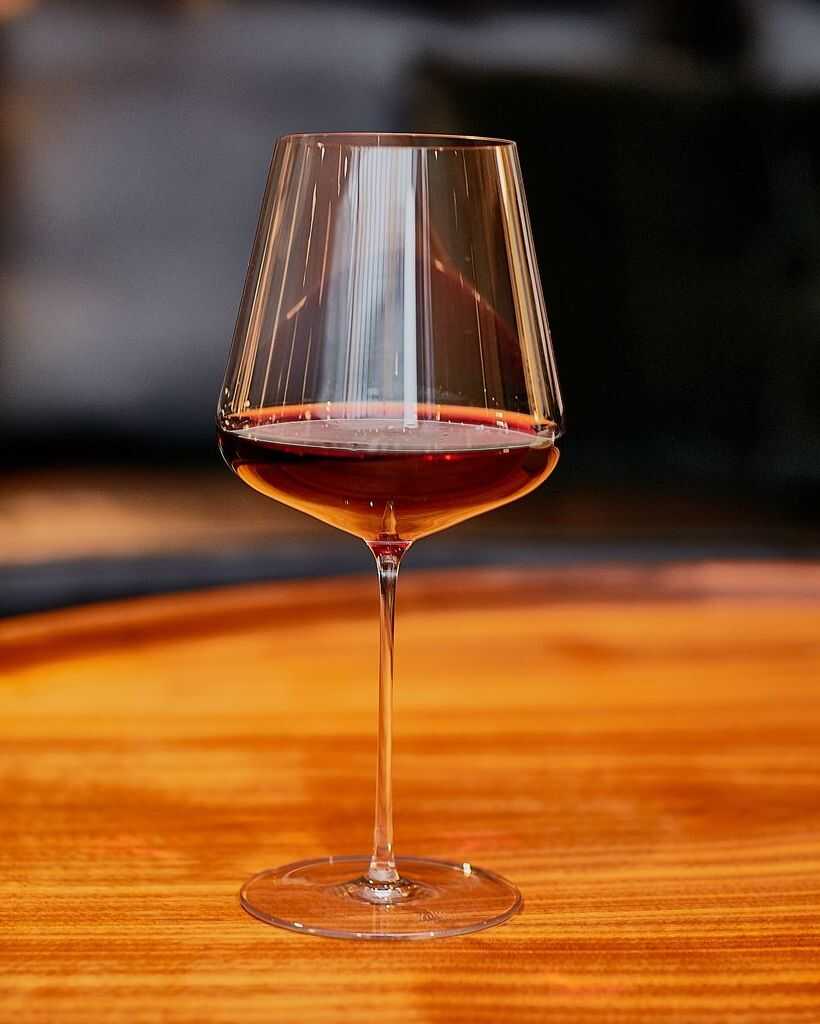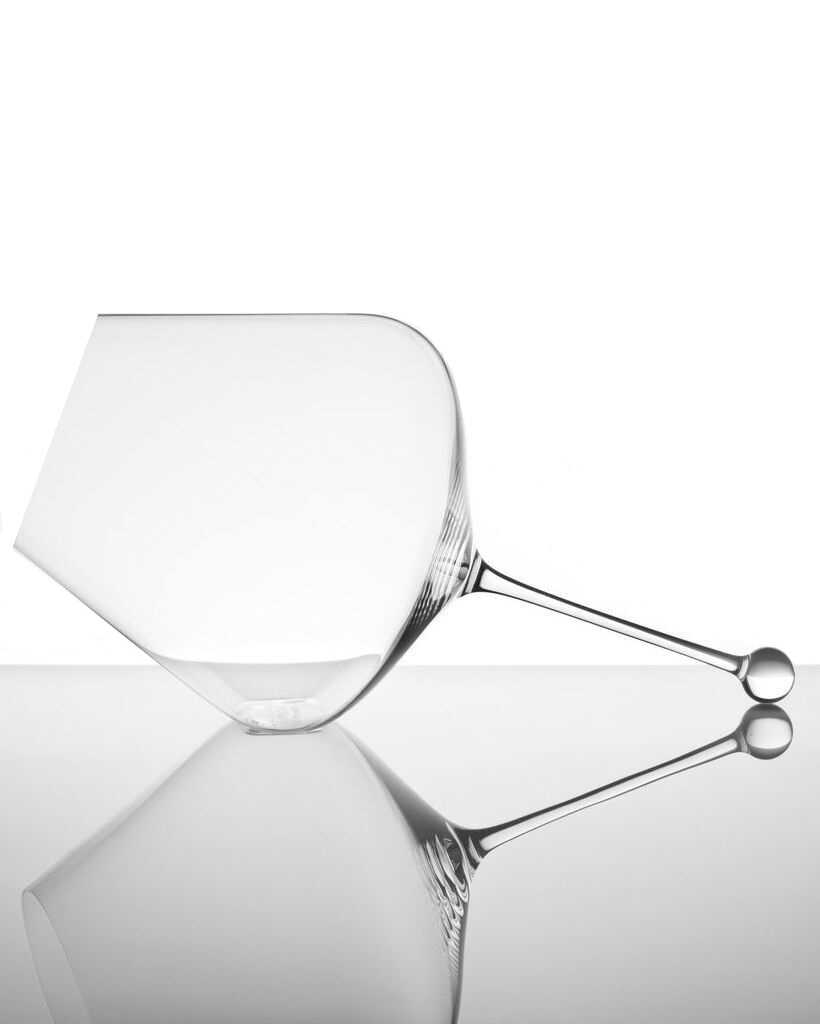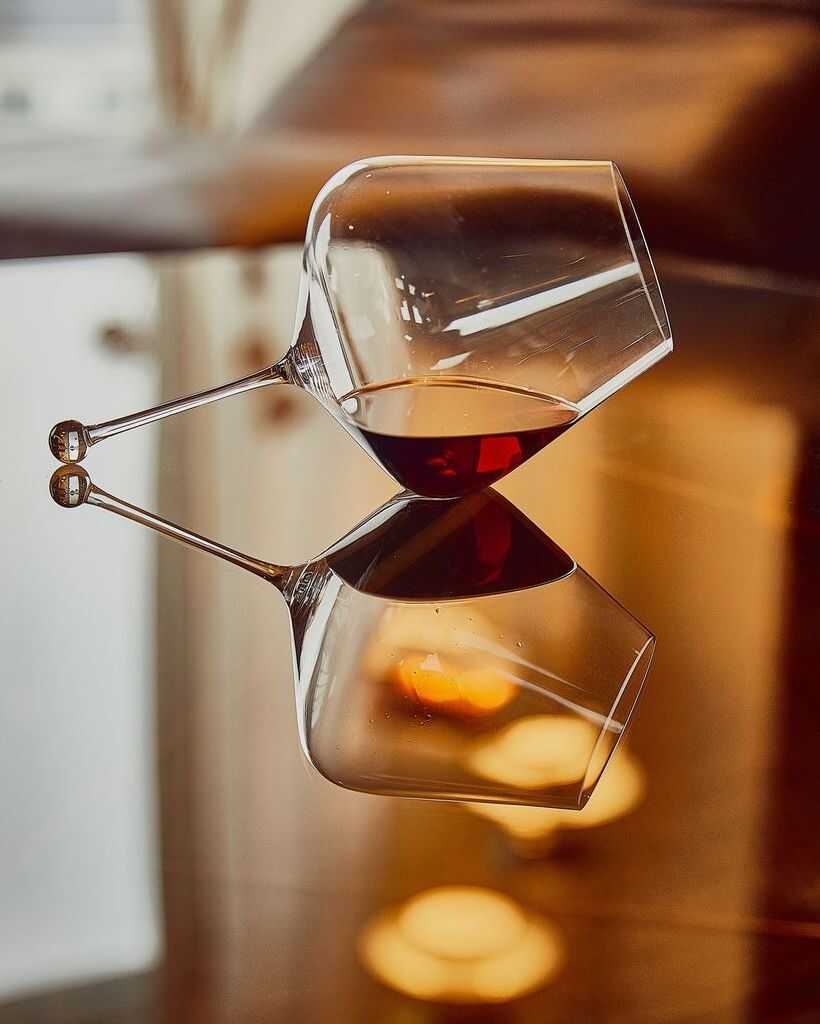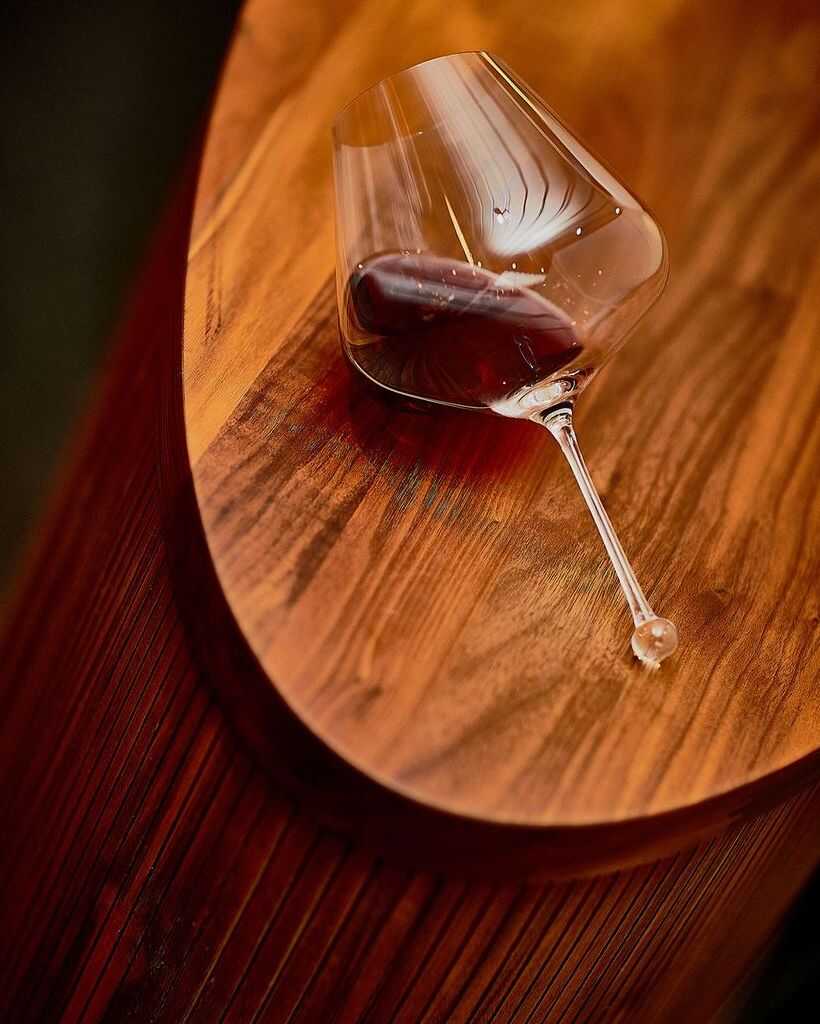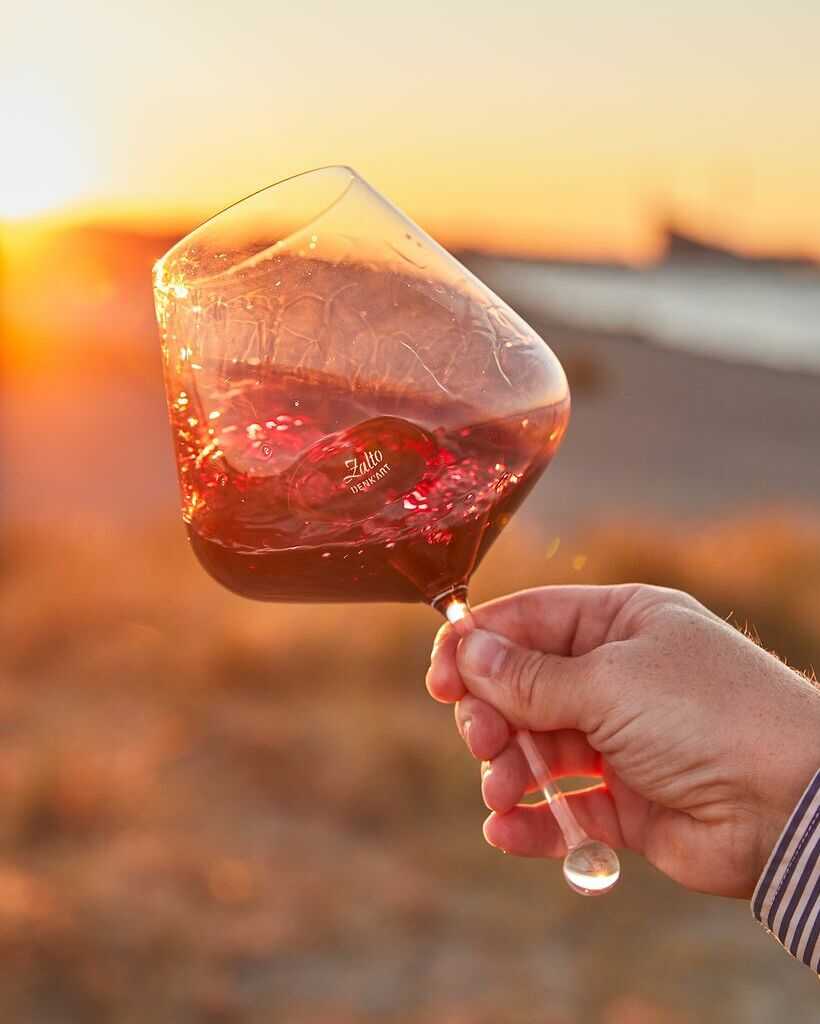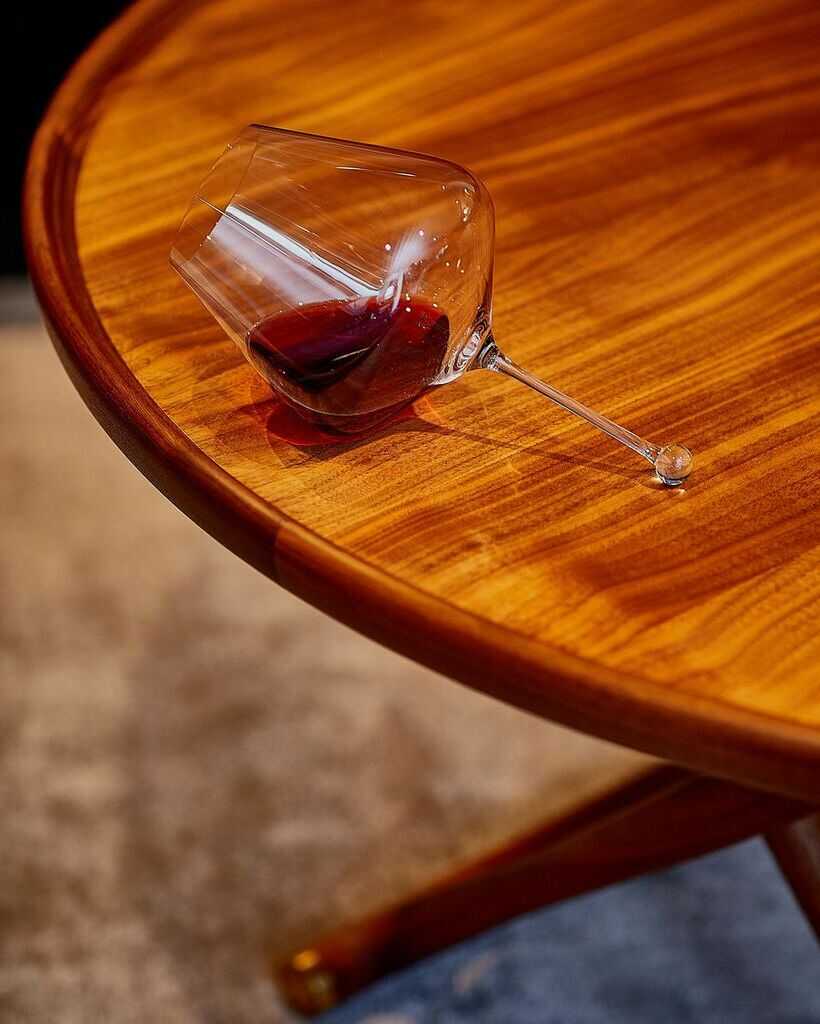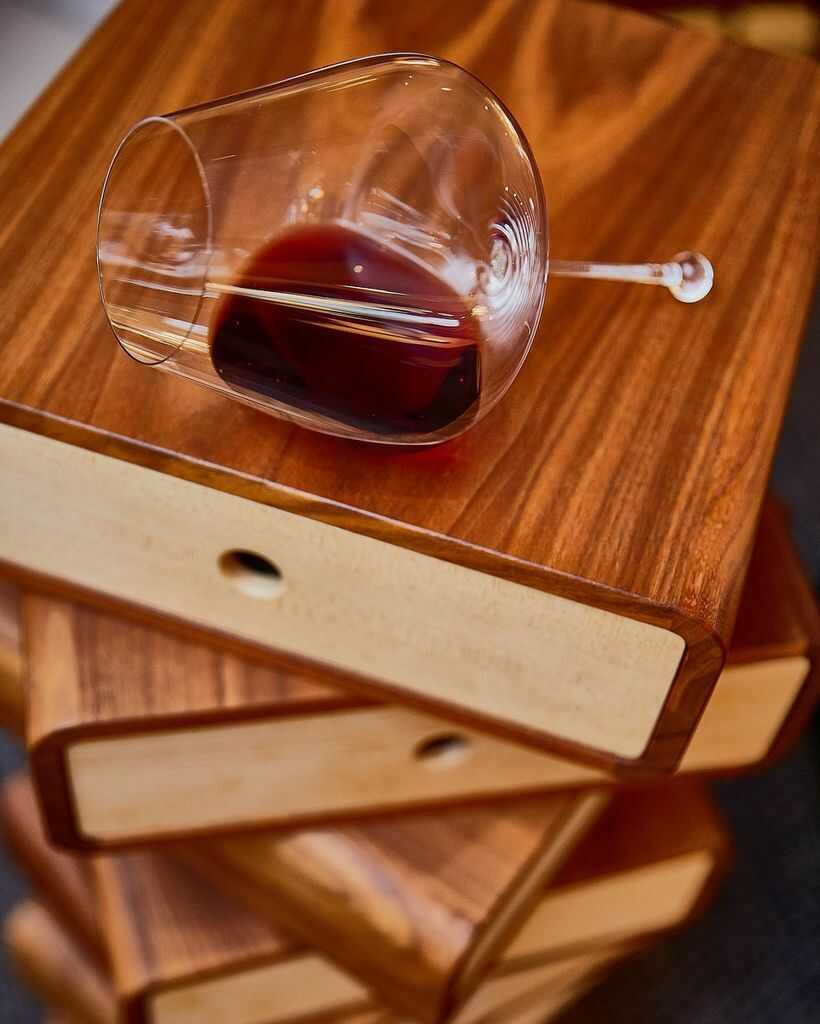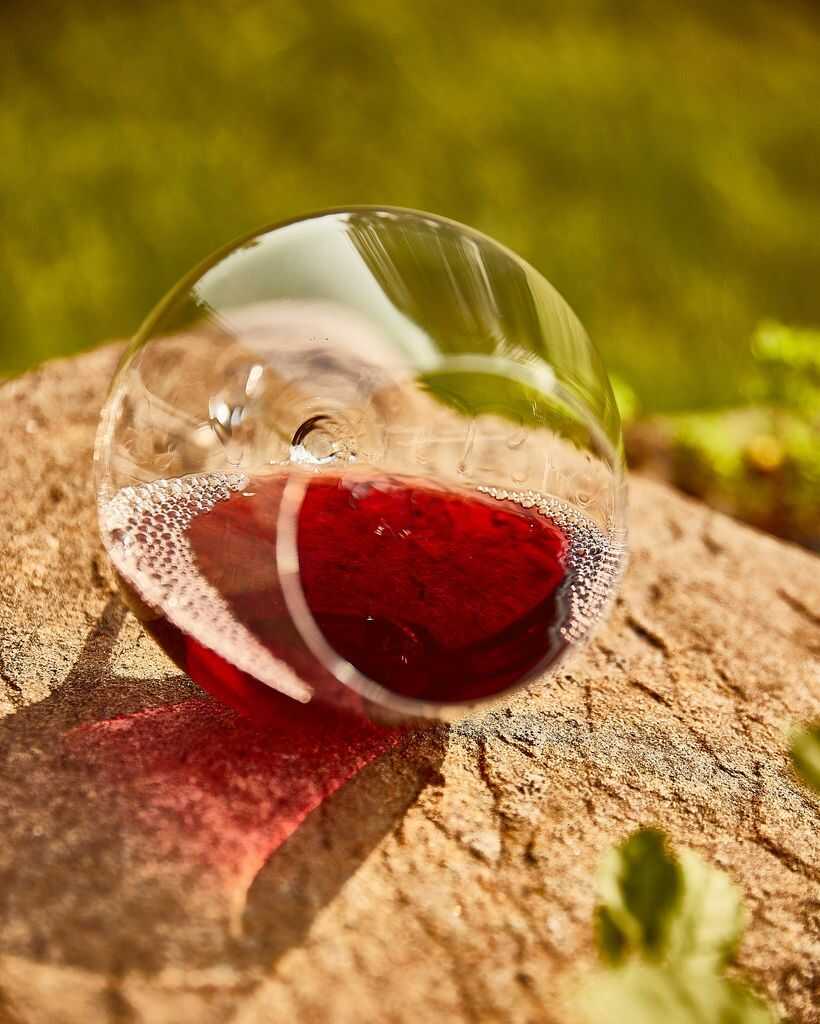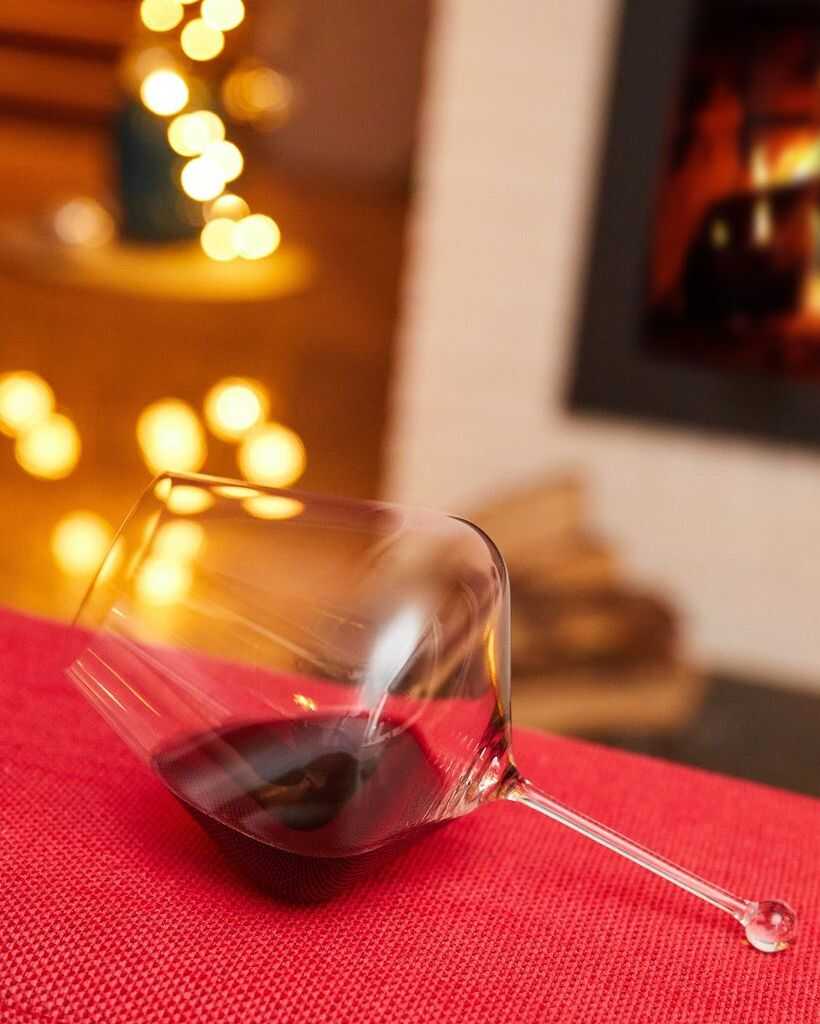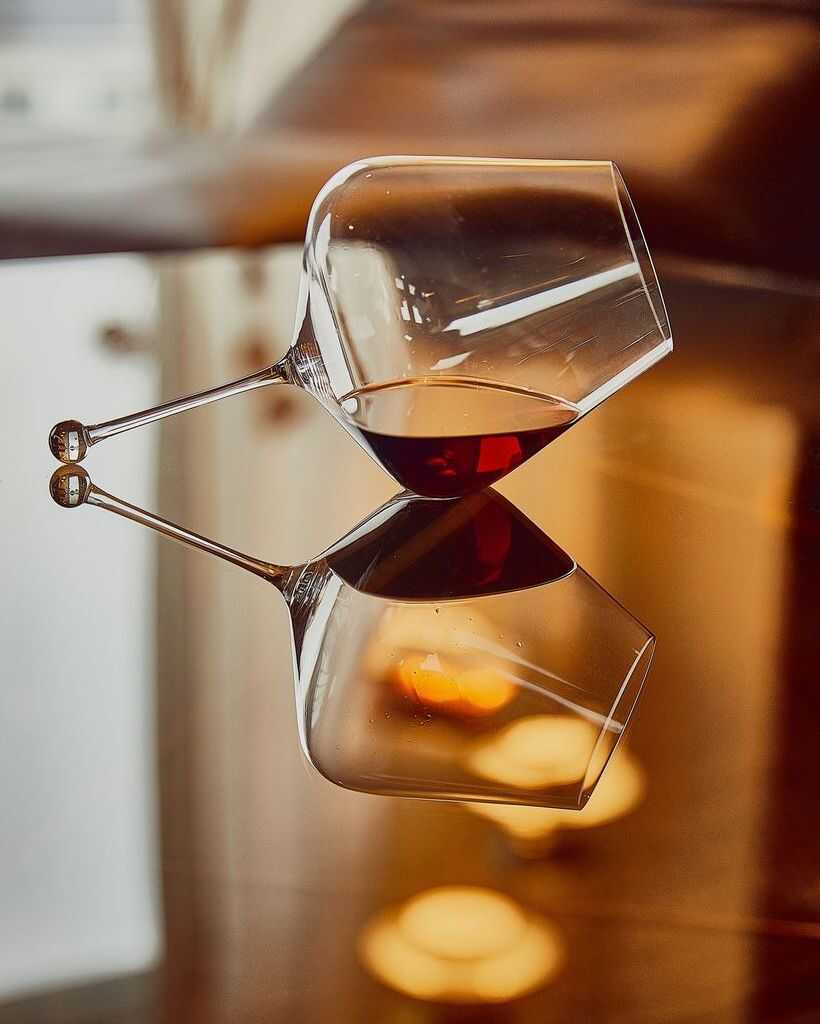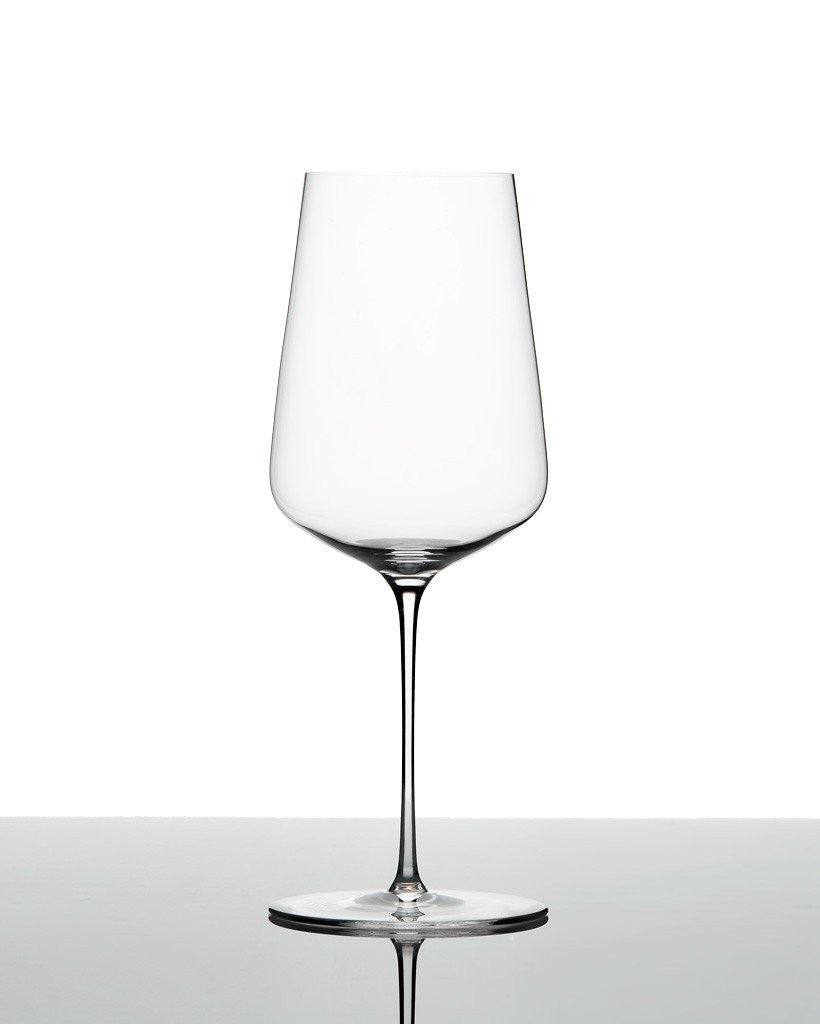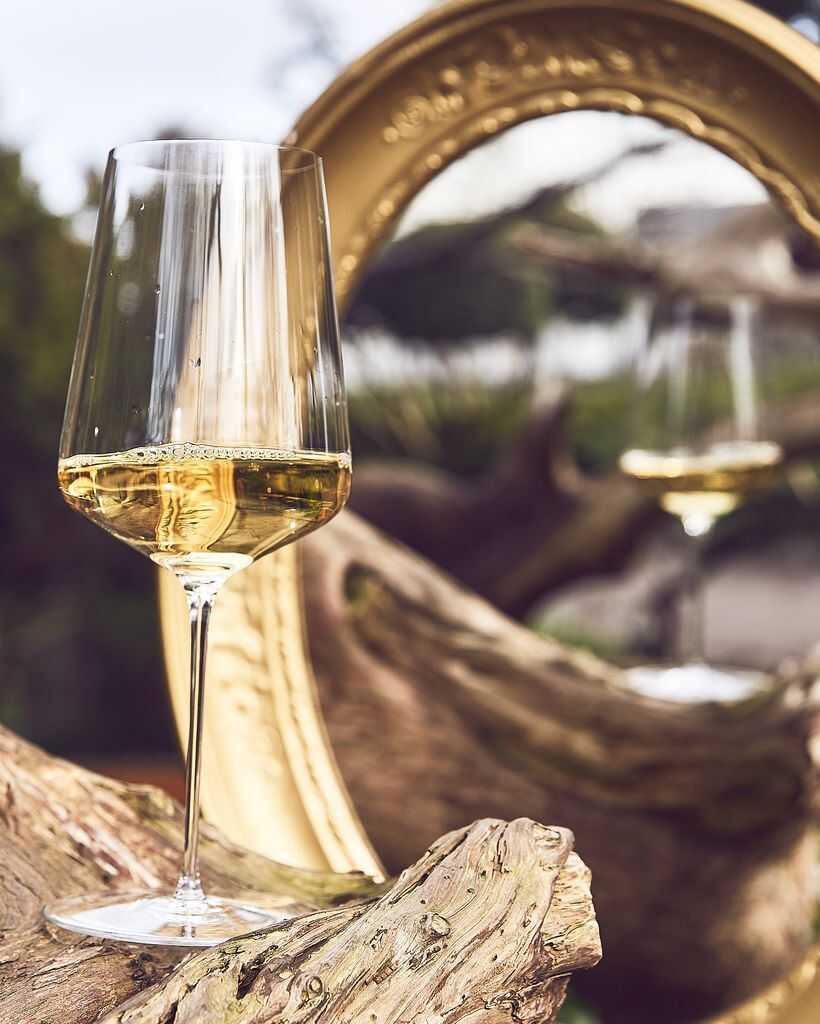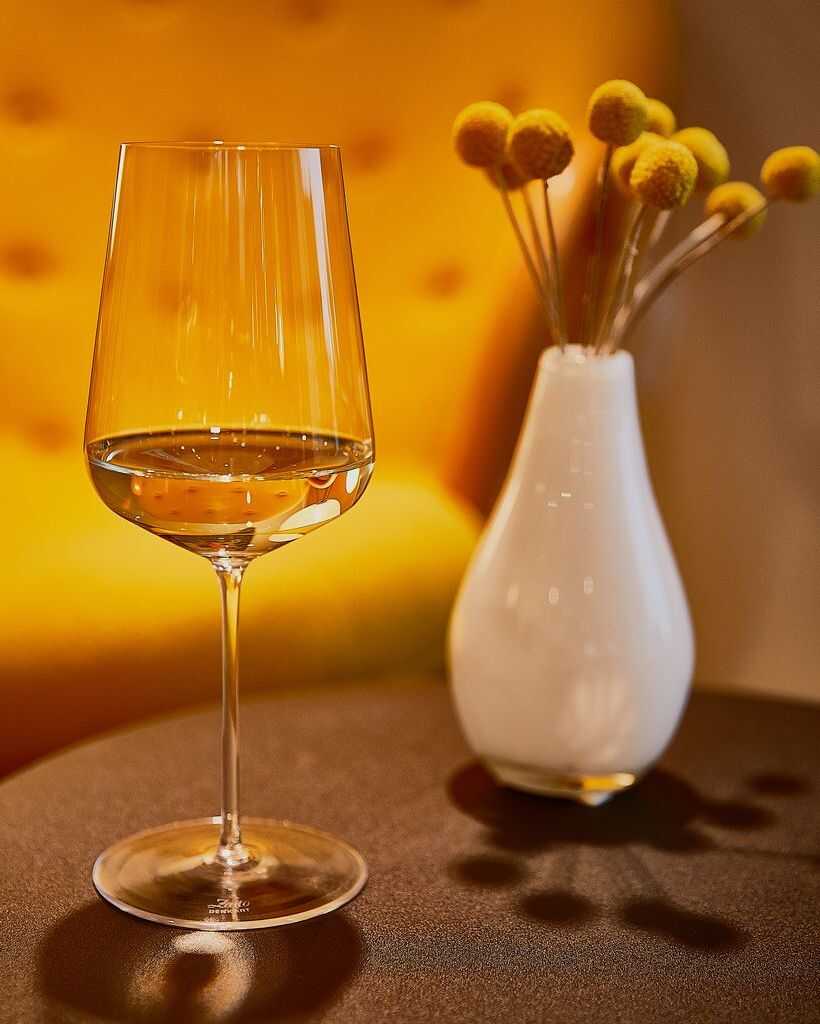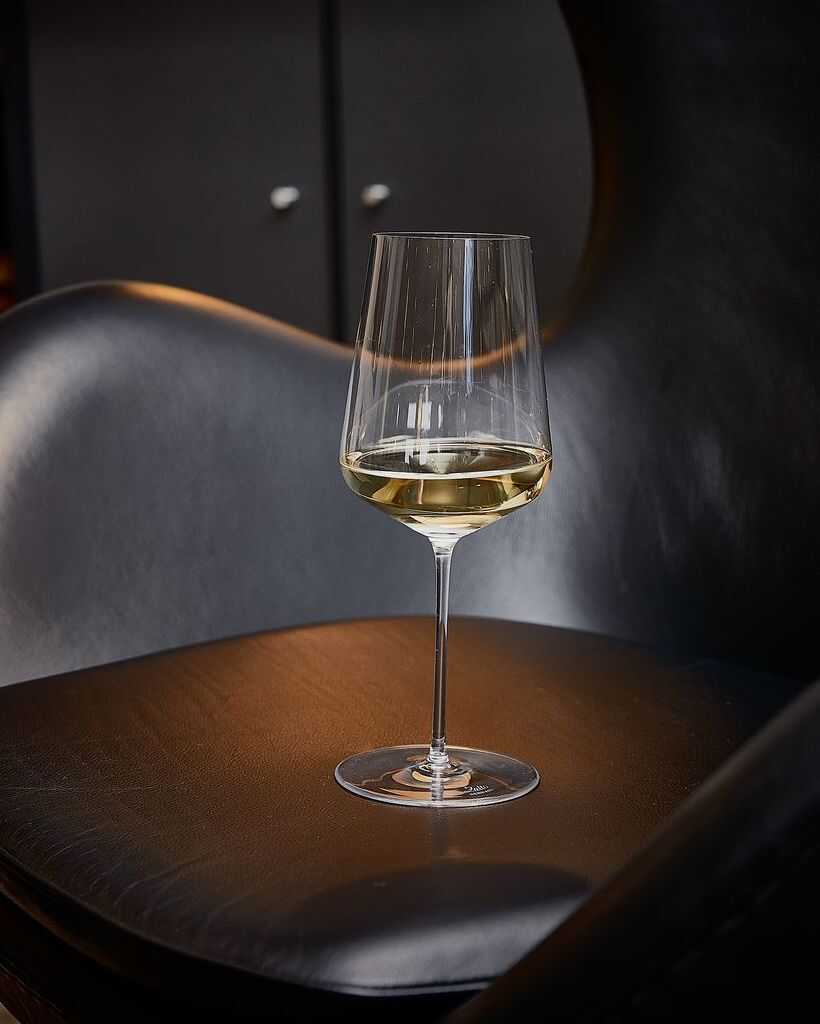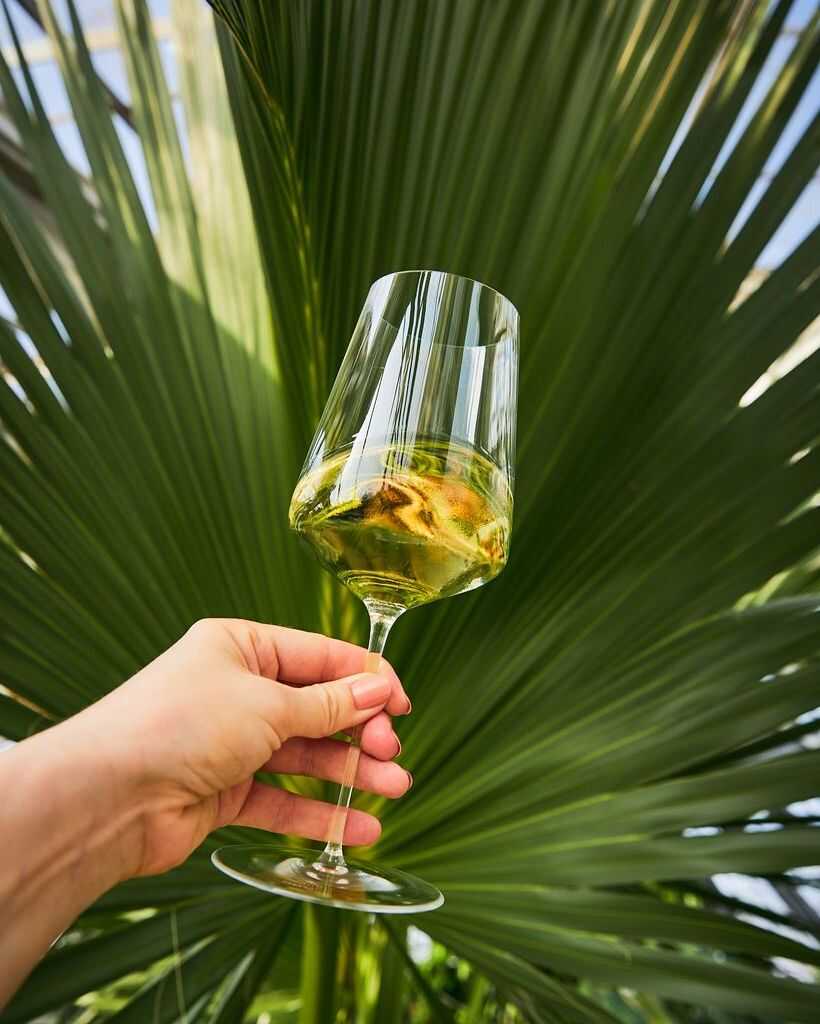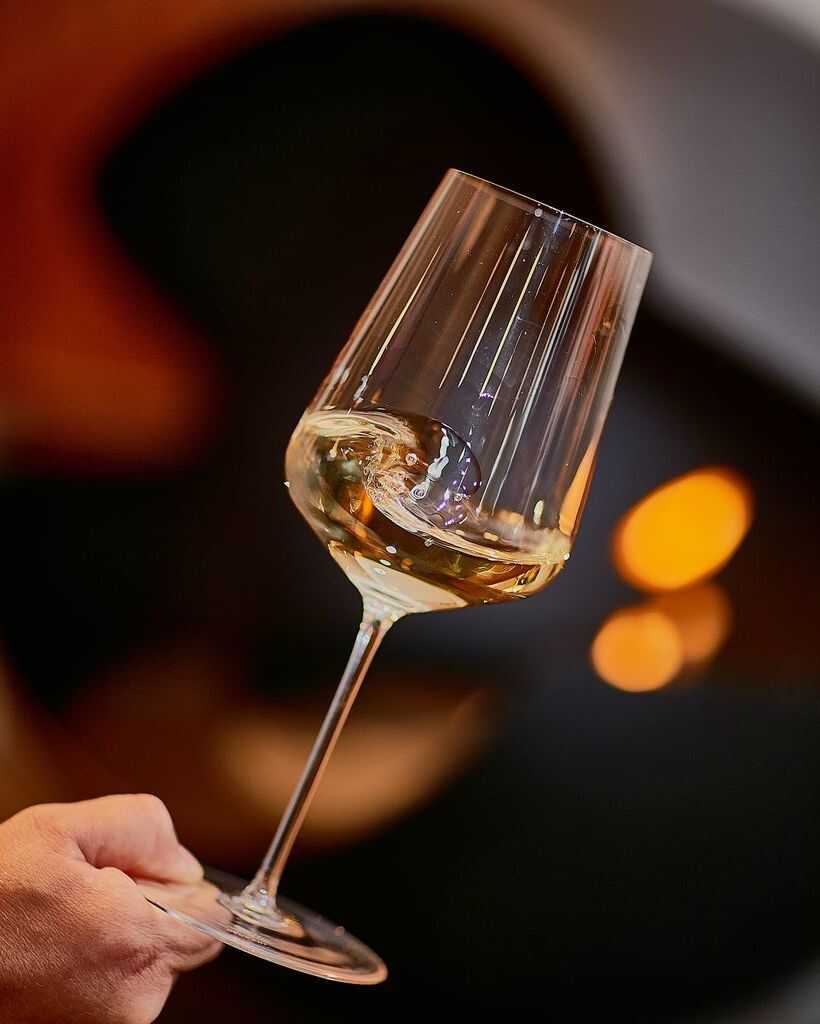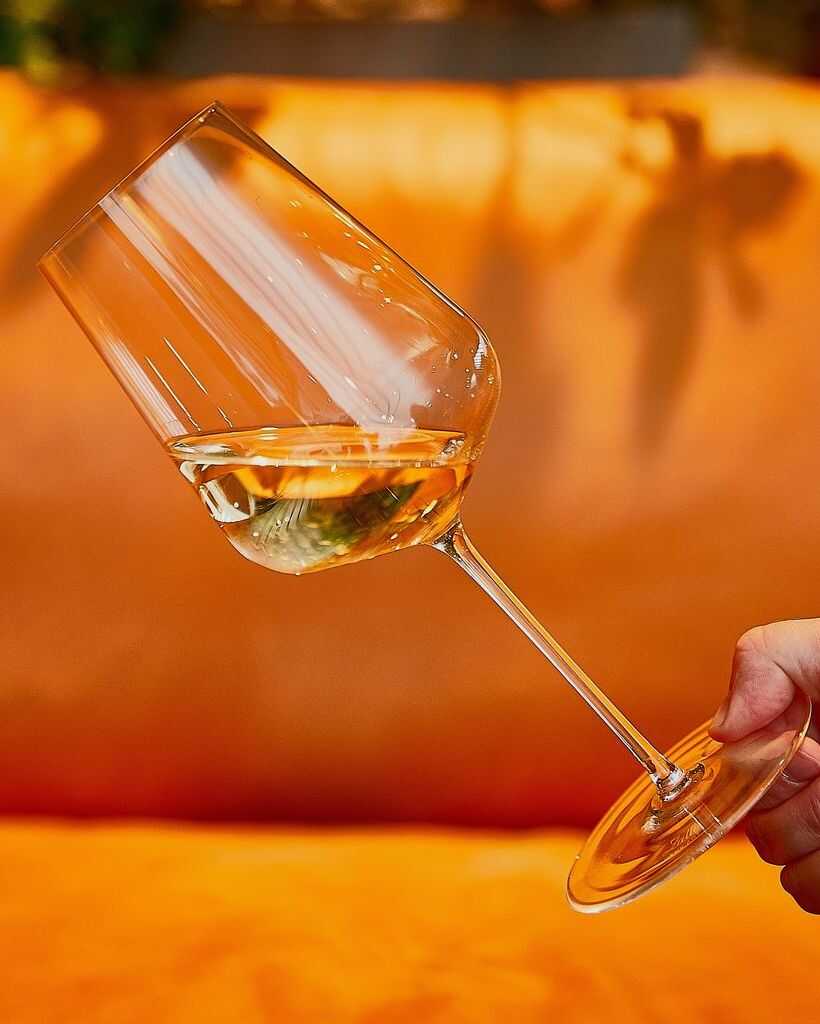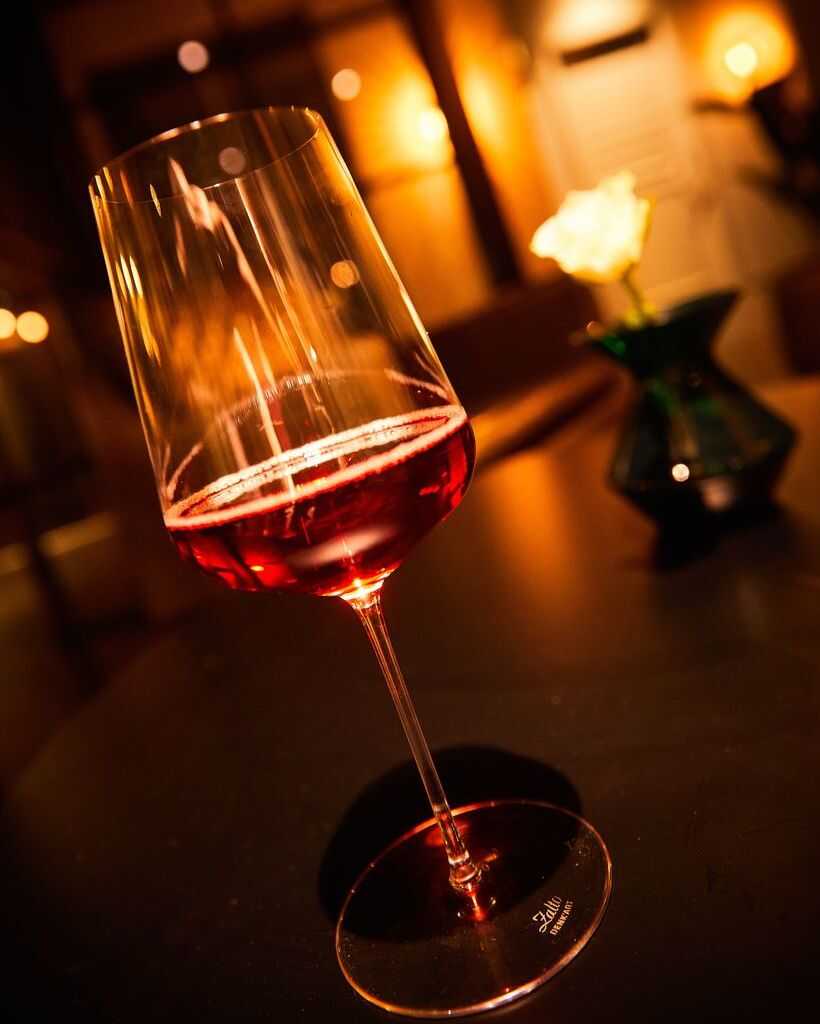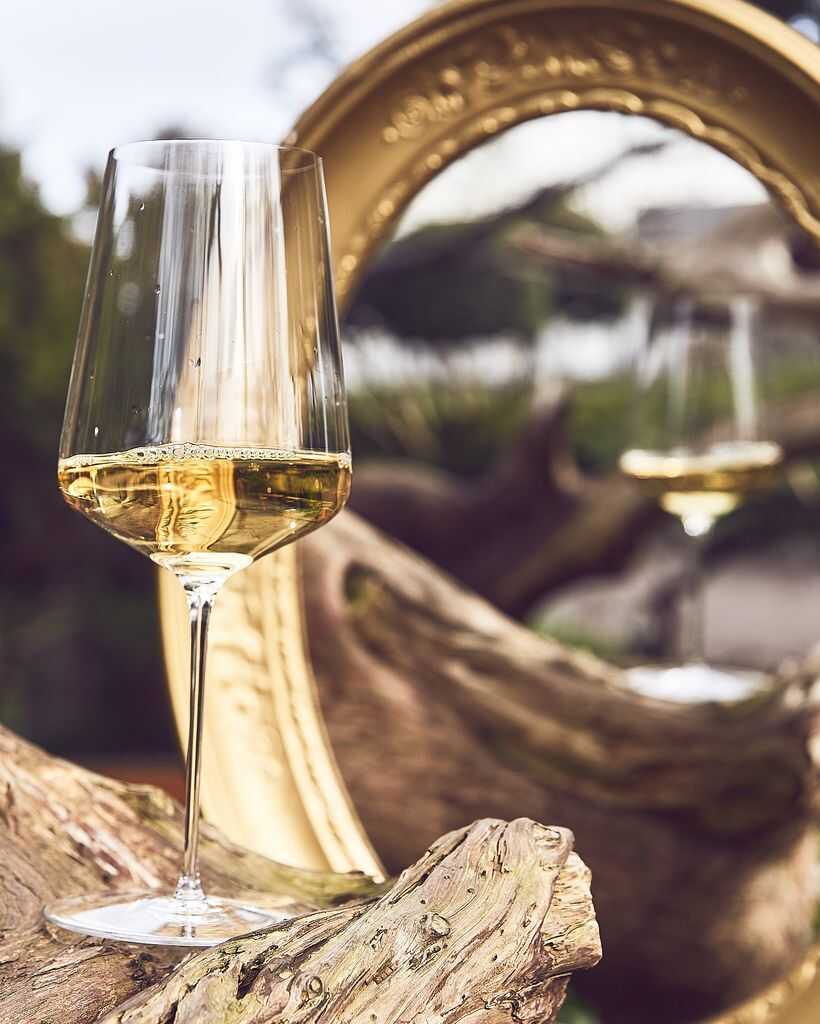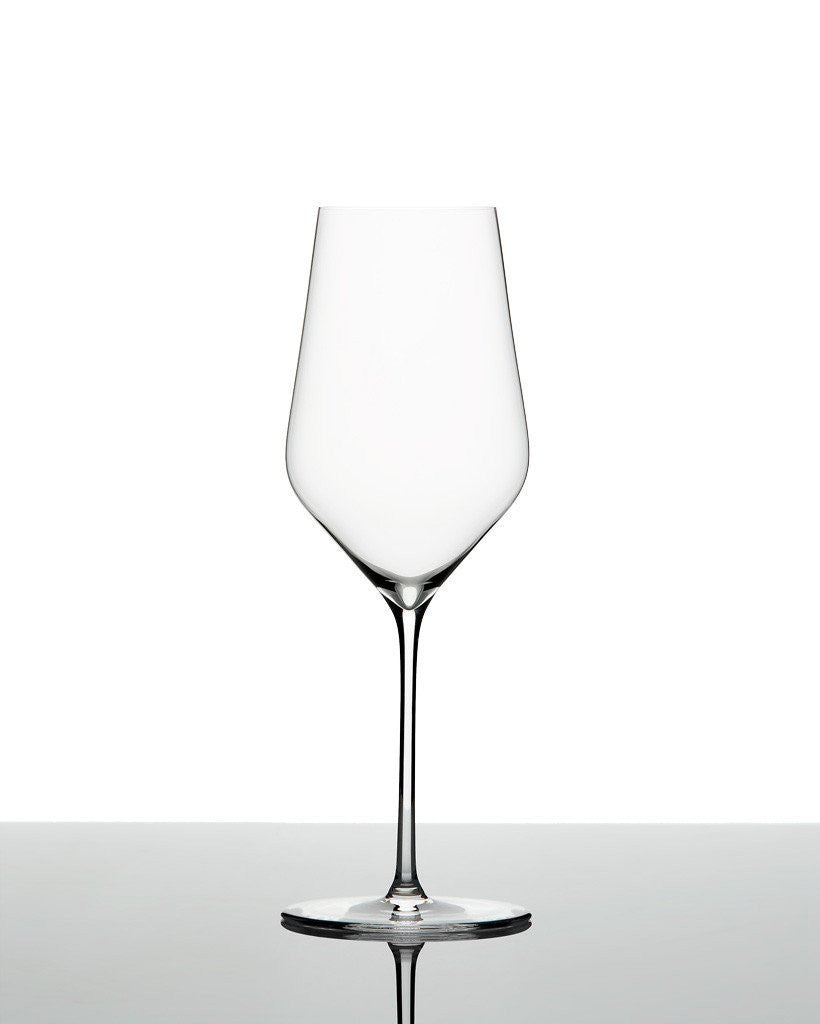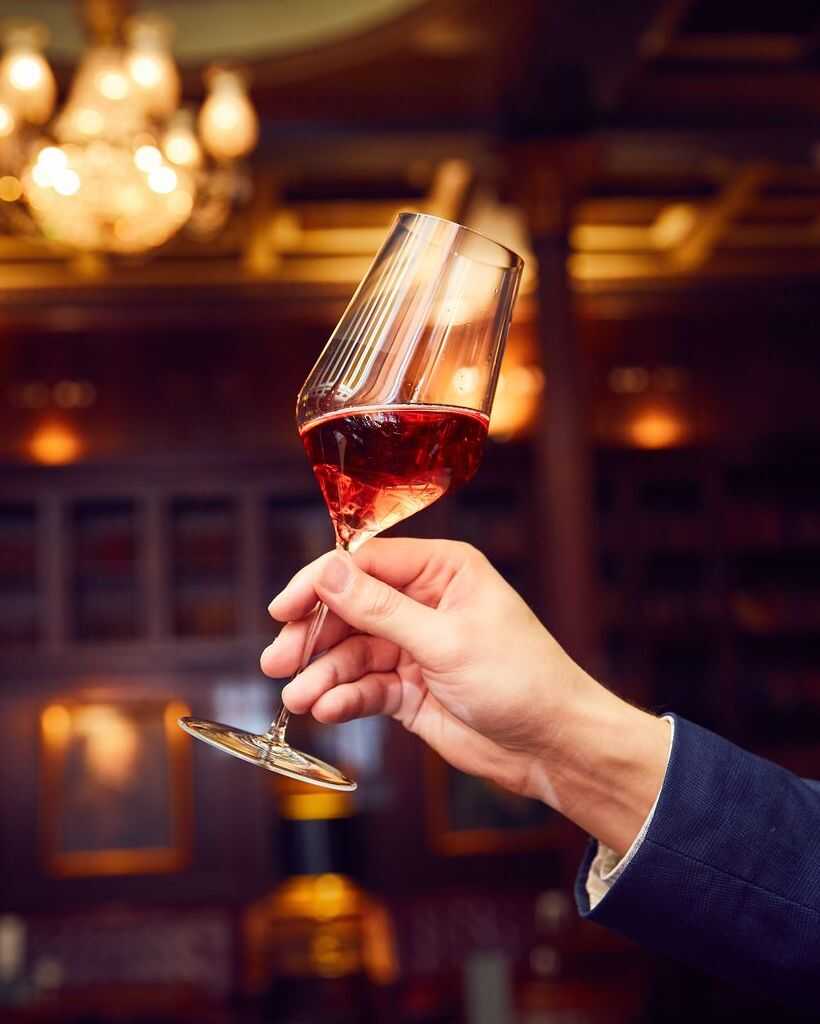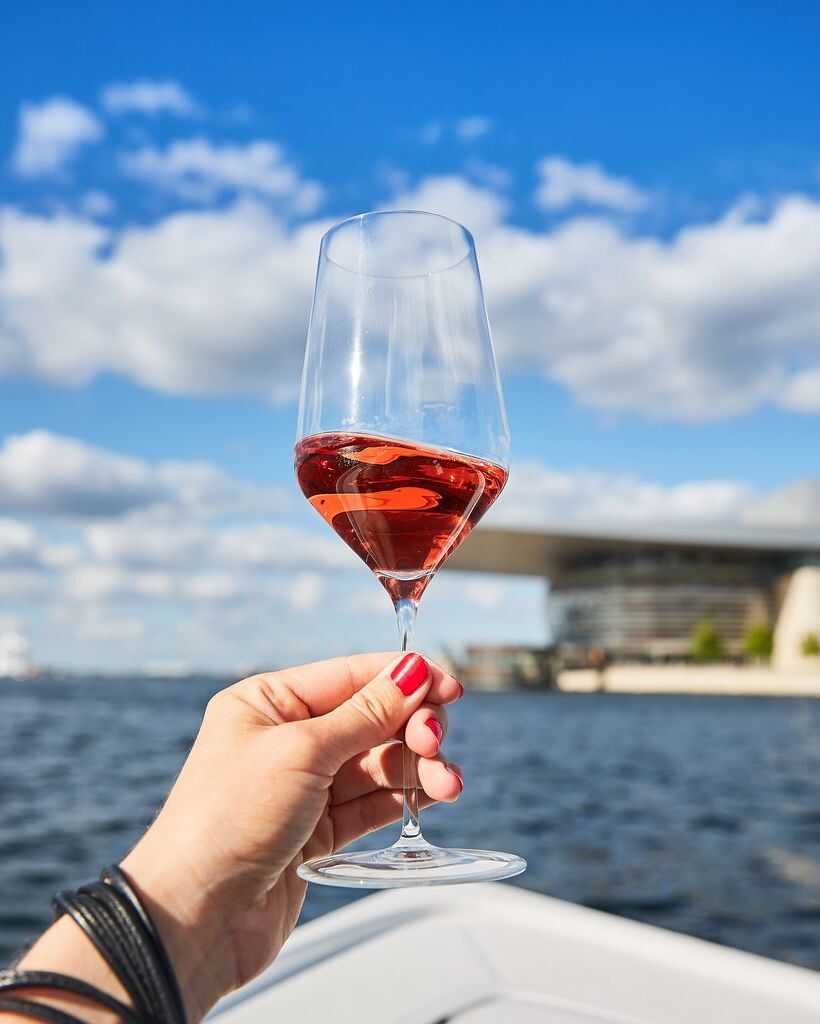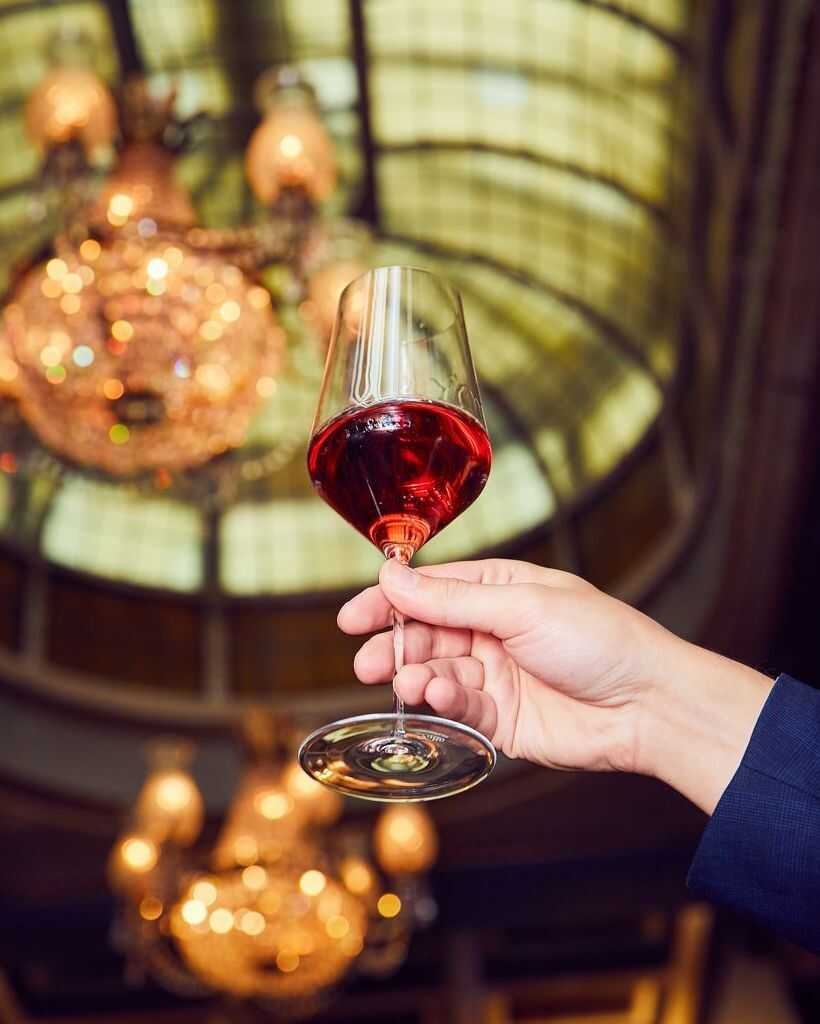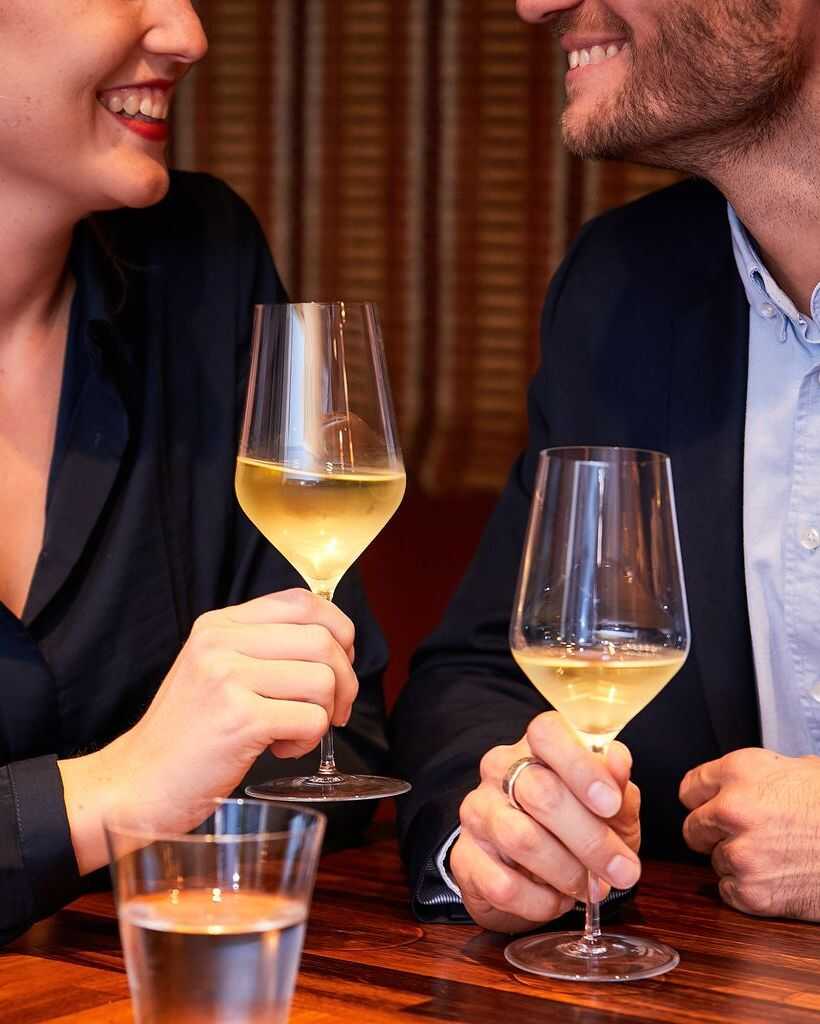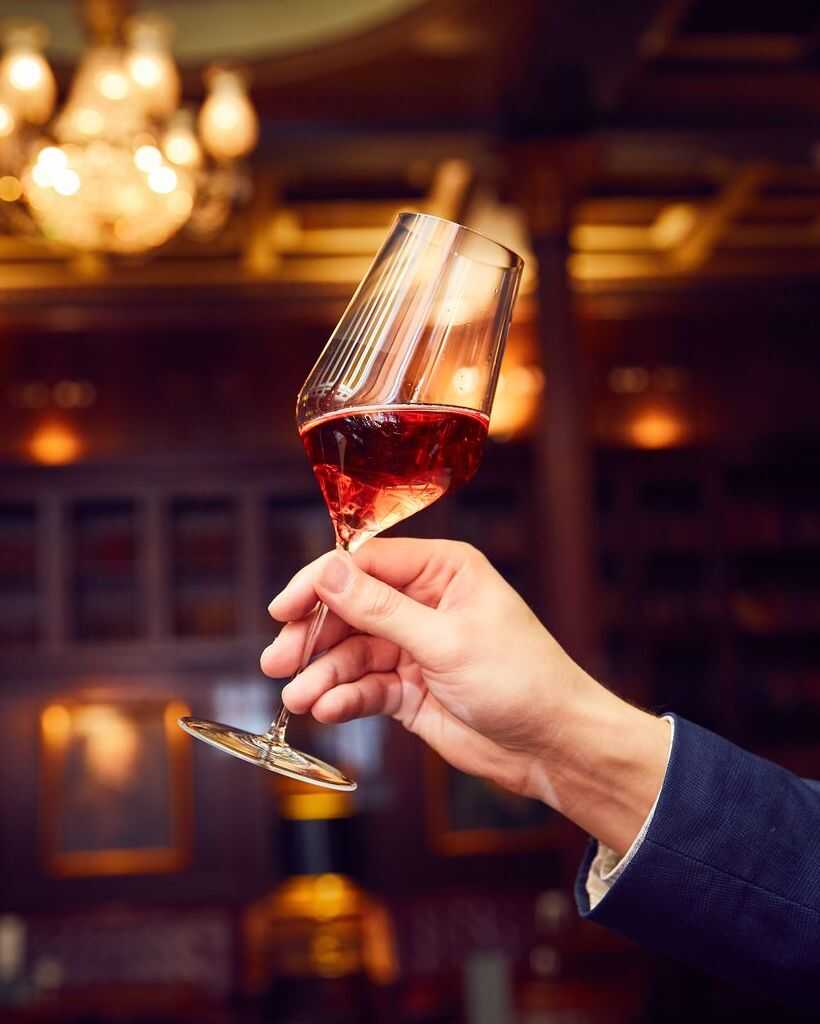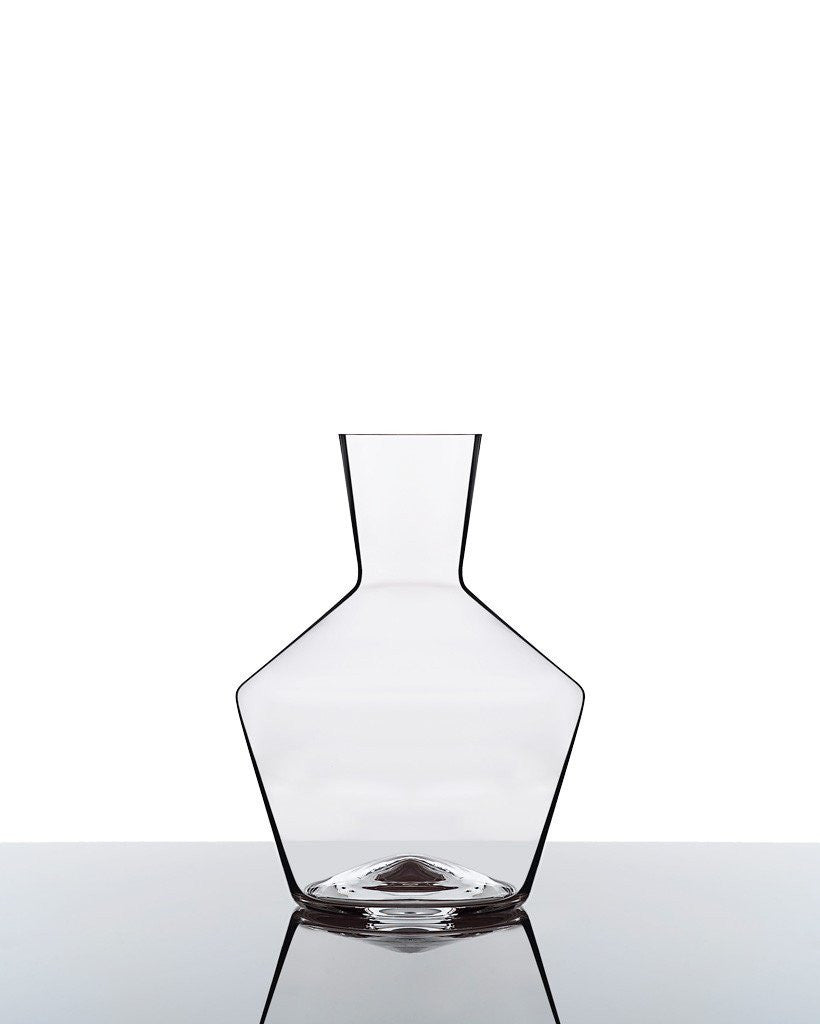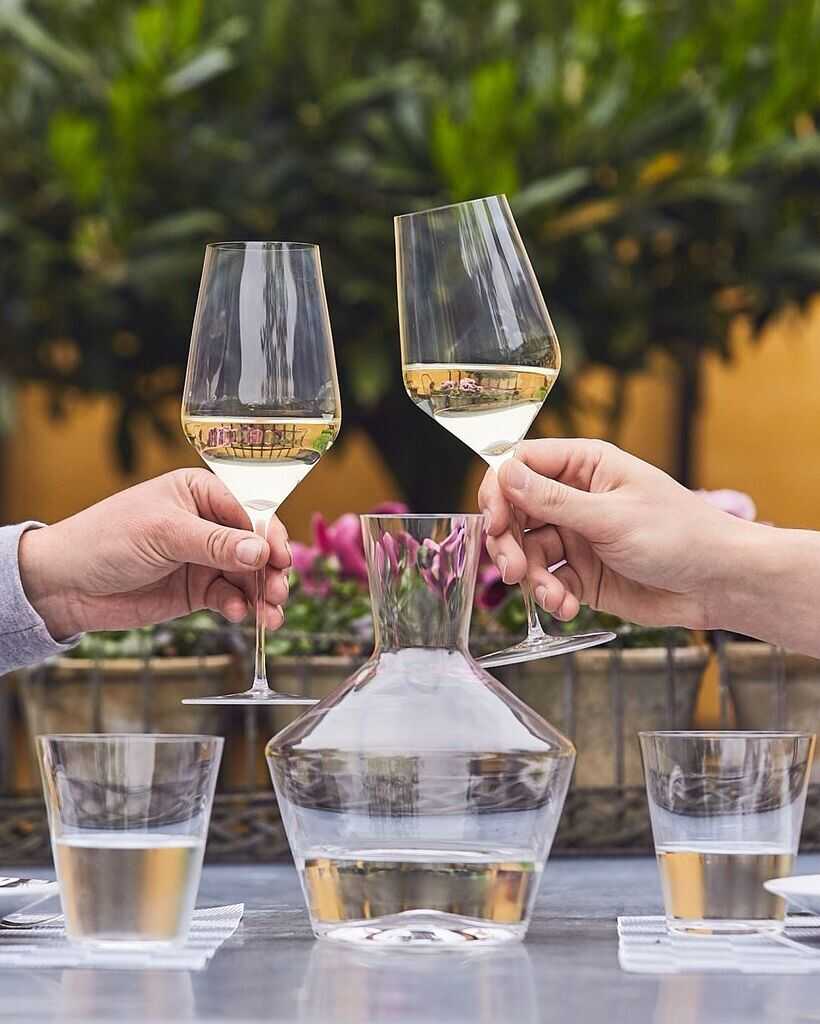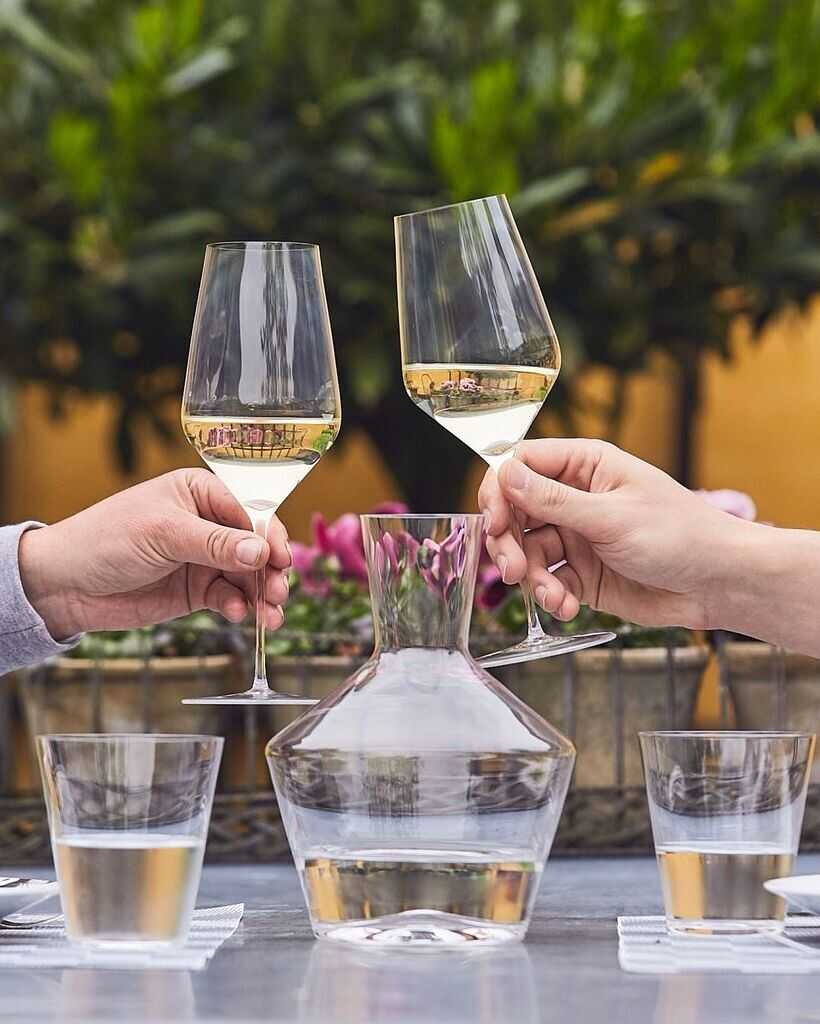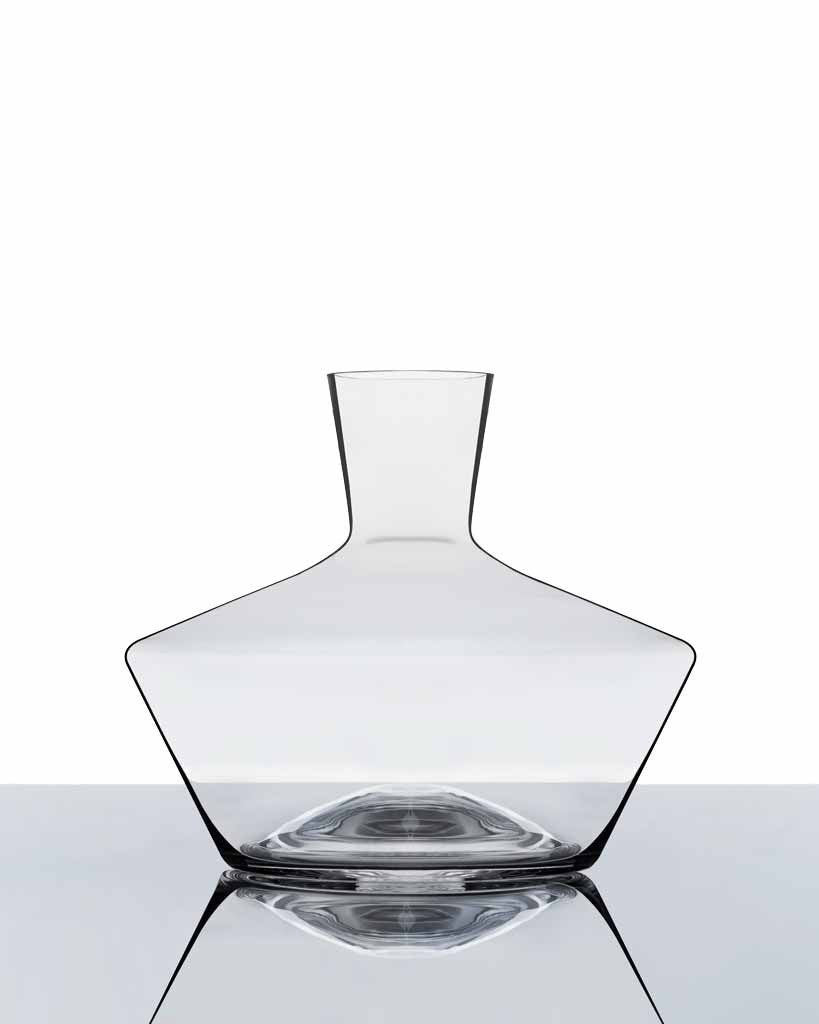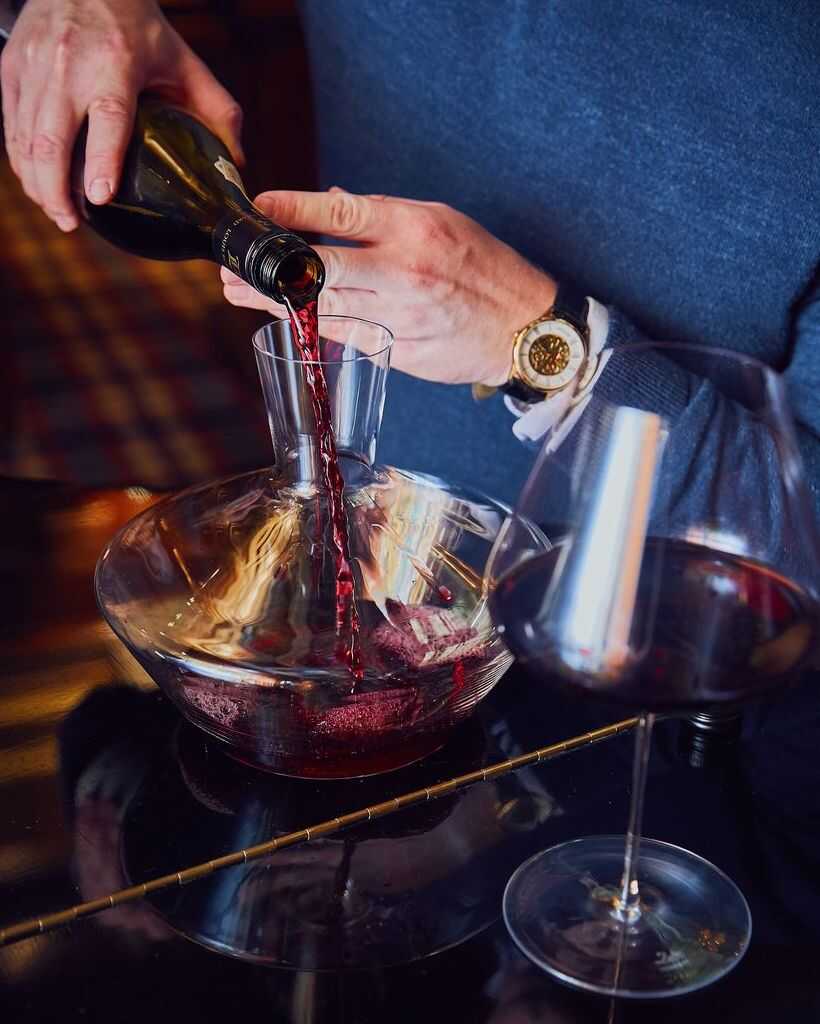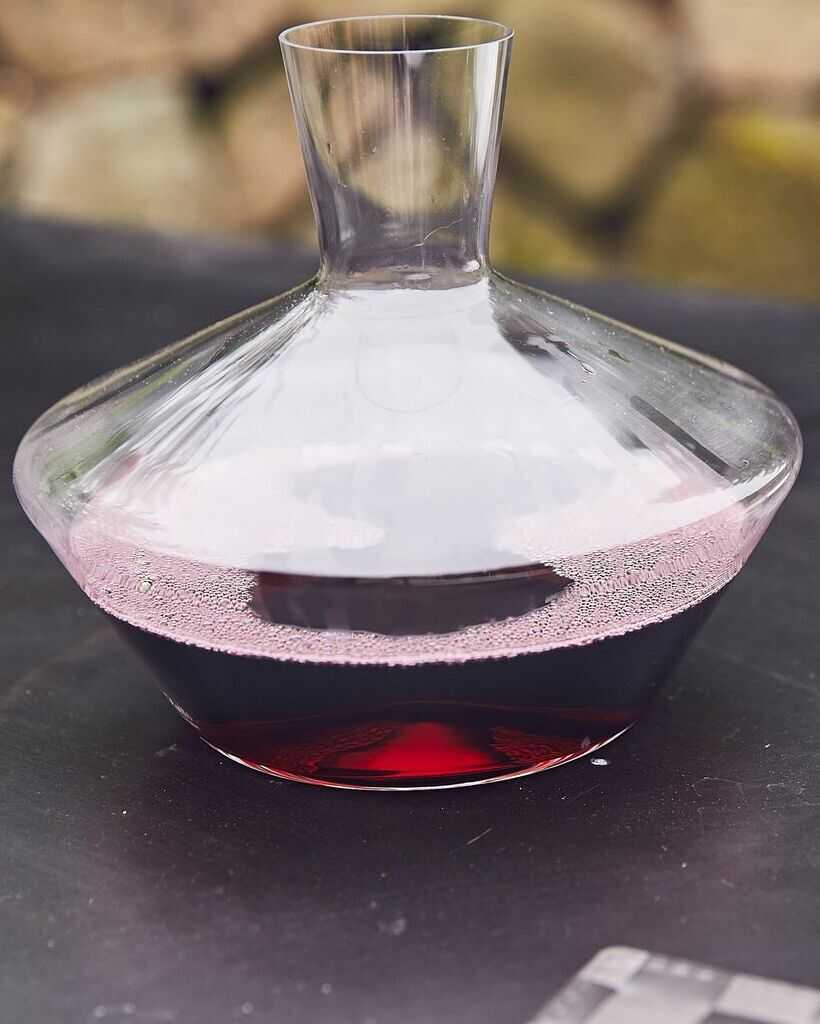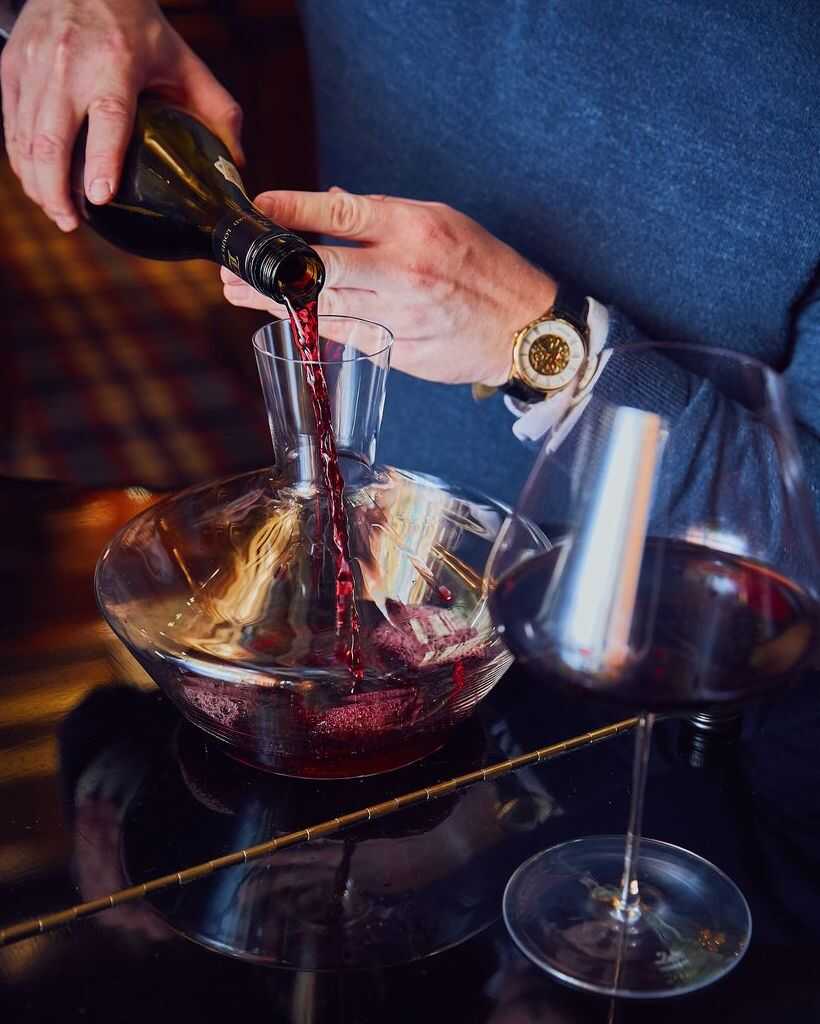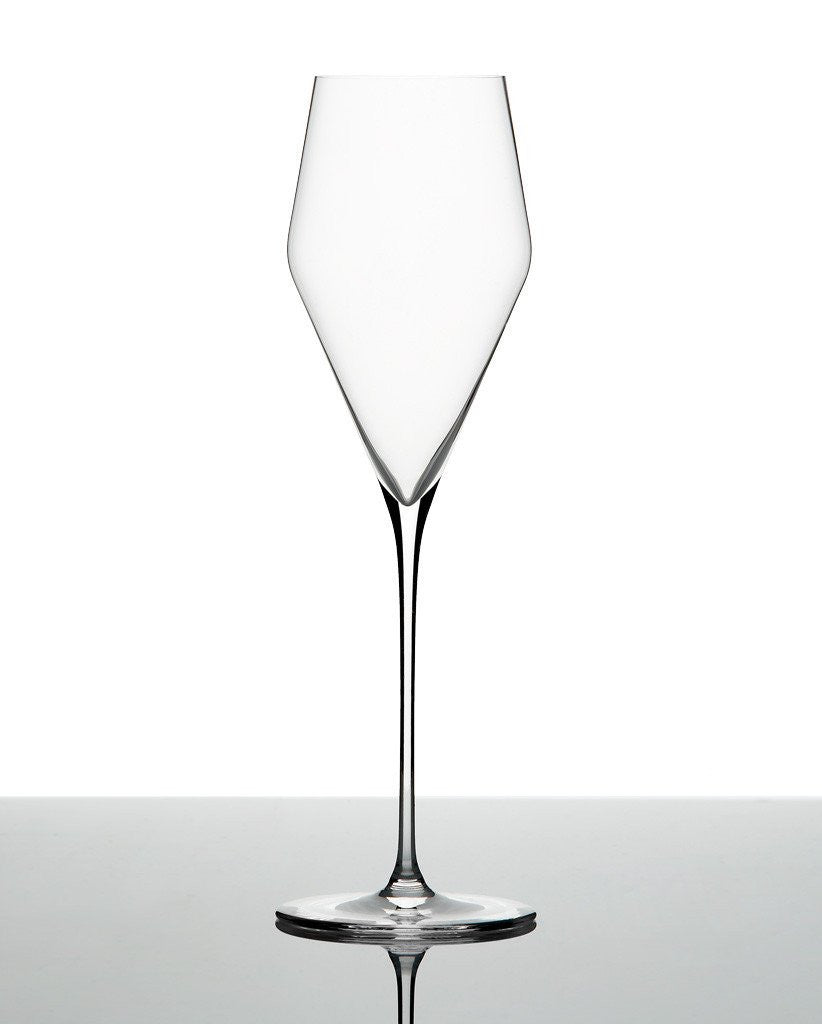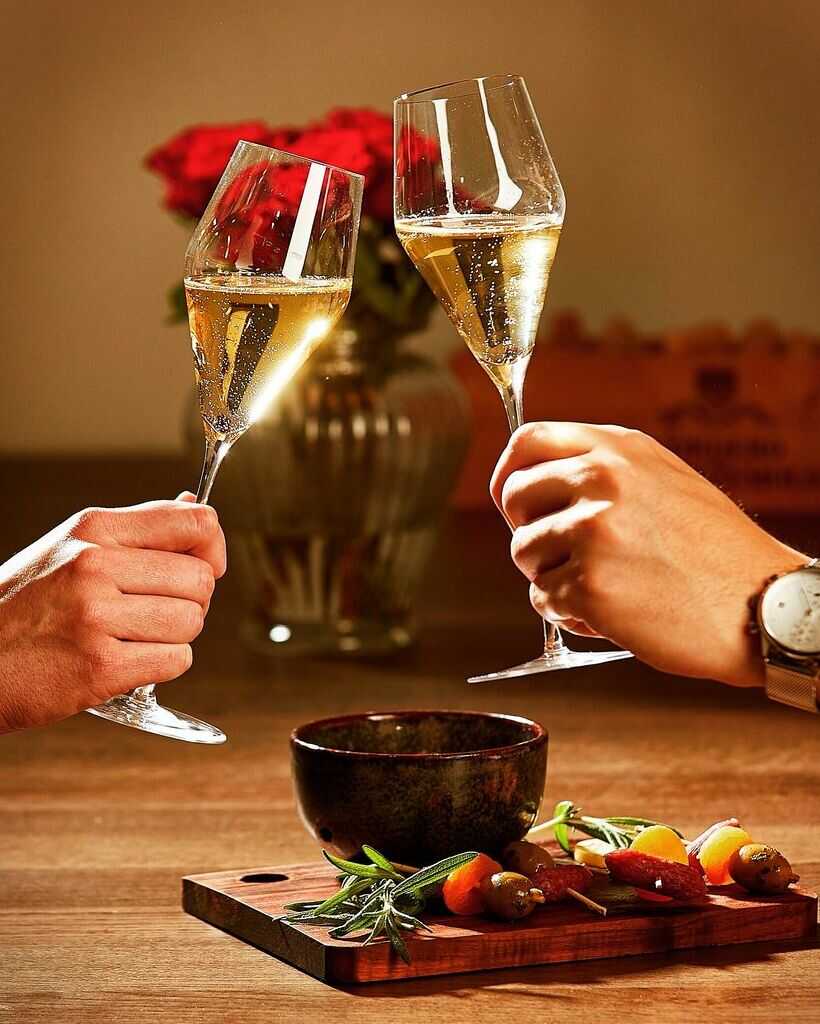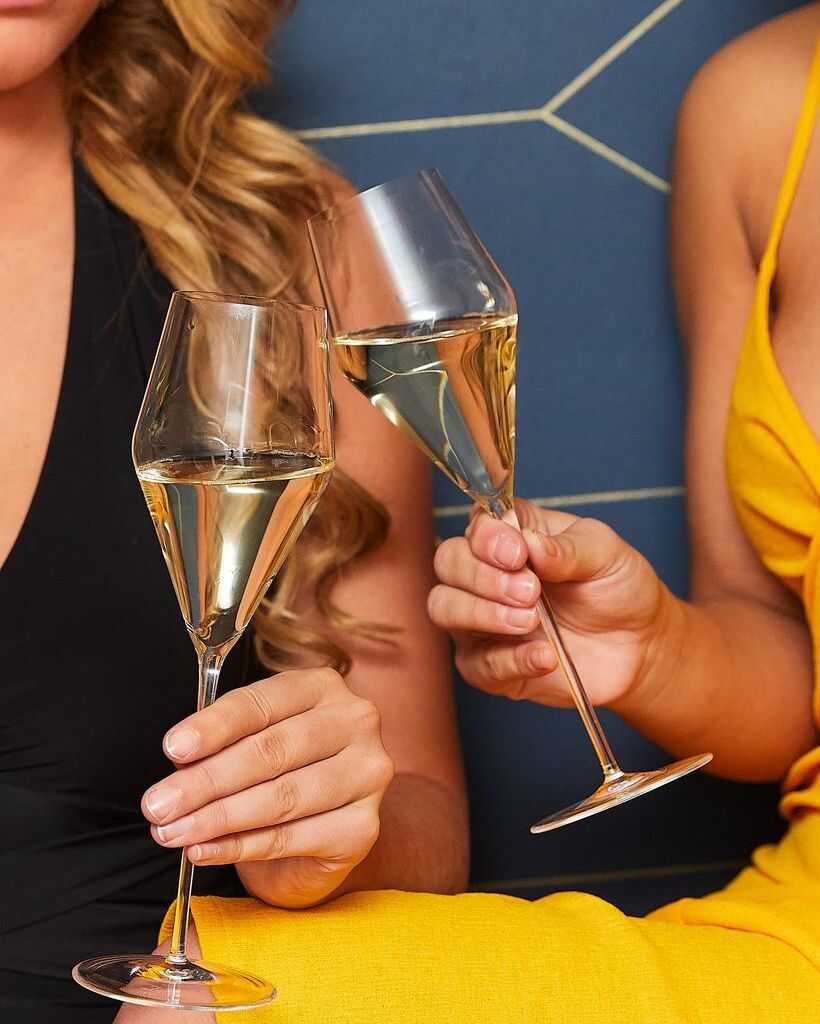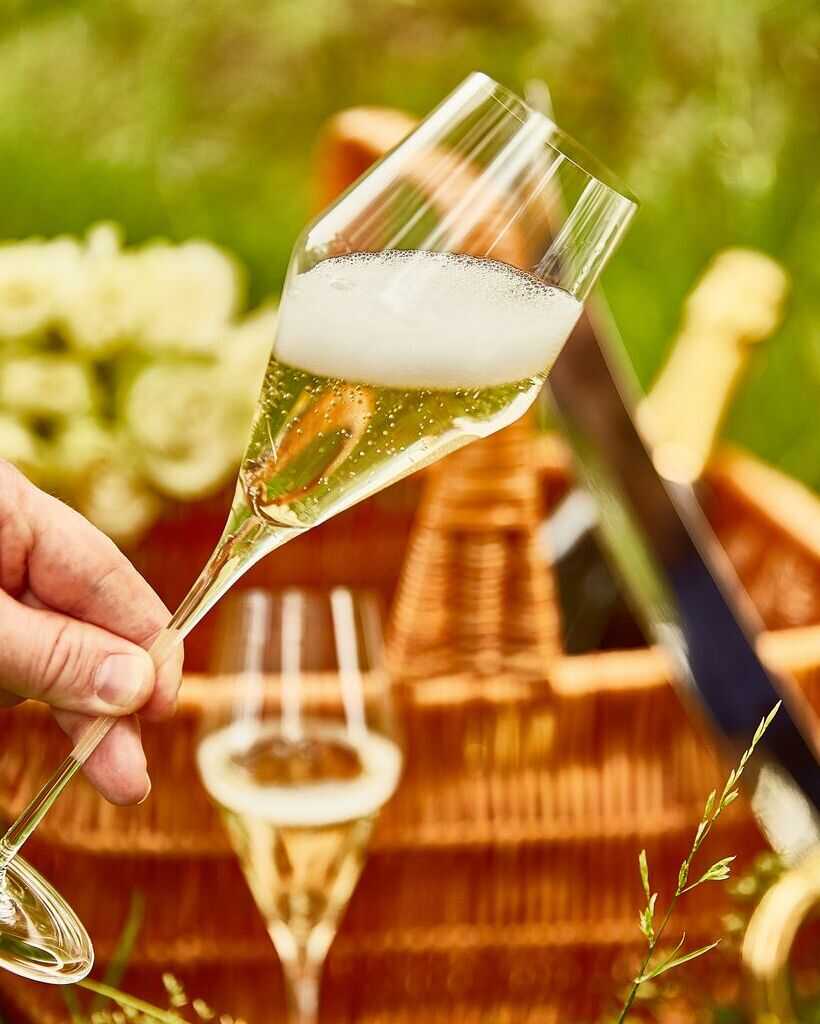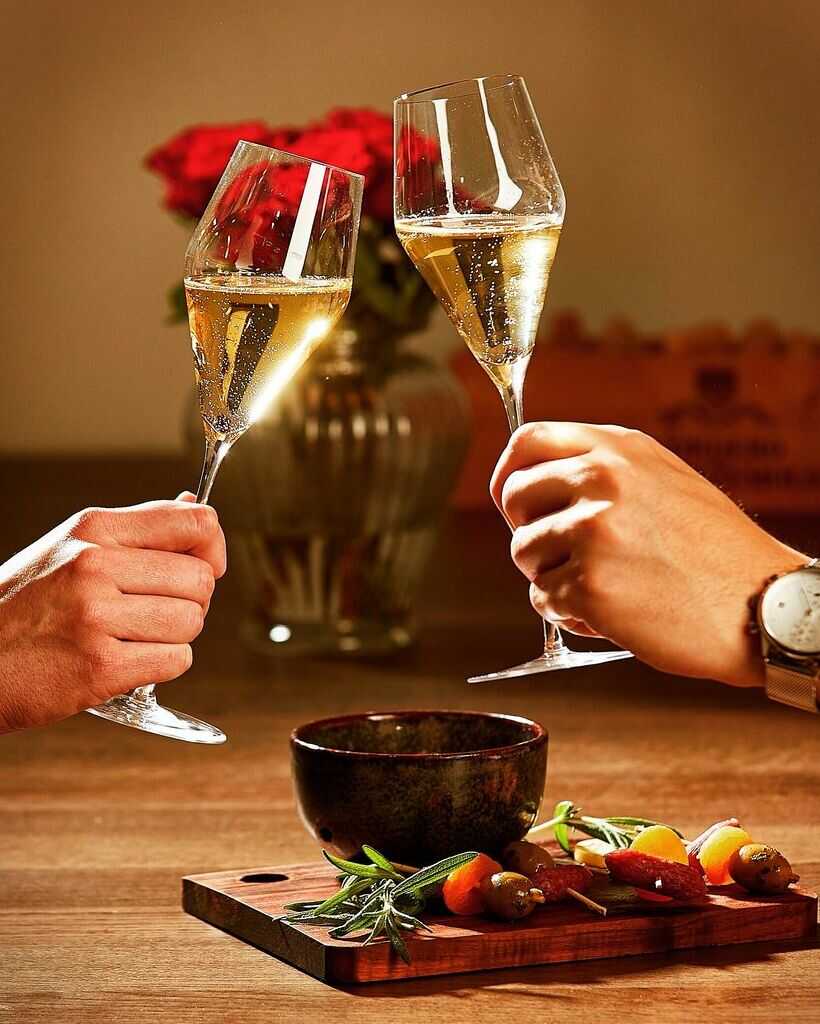A wine glass is basically divided into four parts: The base, the stem, the bowl and the rim. Let us take a closer look at these basic parts to create an understanding of the architecture of the wine glass:
The base
The base is the fundamentally part of a wine glass and has a simple, yet crucial role: Make sure the glass does not tip over. As wine expert Nova Cadamatre expresses: ”Don't cry over spilt milk but spilt wine is another story.”
The stem
The stem has basically two functions:
1.) First of all the stem allows you to hold the glass without any contact with the bowl. It is truly important, so you avoid heating the wine with your body temperature. This is the main reason, why you should avoid stemless glasses. As an example take a look at the Zalto Bordeaux glass how the thin stem enables the wine drinker to get a firm grip on the glass distanced from the bowl.
2.) The second function of the stem is to keep your hands away from the rim. The reason for this is that your hands have their own unique scent, which can change the aromas and the taste of the wine. This is why the stem is an important part of the wine glass as well, because the stem enables your hands to have a distance to your nose, so your hands’ scient does not impact the taste of the wine. We know, details!
The bowl
The bowl can have many shapes and is often the most 'eye catching' part of the wine glass. Just look at the Zalto Burgundy glass! The bowl is as well the most essential part of the wine glass, because the bowl enables you to swirl the wine. Importantly, the bowl has to be wider than the rim, so swirling is possible without losing the aromas of the wine. Swirling is a crucial part of improving the taste of the wine, since you release volatile aroma compounds and more nuances of the aromas will be revealed. The greater the surface area of the bowl is, the more volatile aroma compounds can be released. The bowl therefore has a useful and important role in enriching the taste of the wine.
The rim
The rim is the very fine and fragile part, where the wine and your lips first meet each other. By paying attention to the rim the very drinking-moment can be enhanced. The thinner the rim is, the more uninterrupted this transition can be – without feeling the glass you can instead focus on the perception of the wine taste. With Zalto white wine glass you can truly see, how thin a rim can be - down to 0.3 mm!
All the parts of the wine glass have purposes and important functions that all combined create a perfect 'tool' for enjoying the best wine taste. Wine has a great complexity – and so does the wine glass. The wine glass is the 'tool' through which the complexity of the wine can be unfold. The right wine glass means a glass that can bring all the nuances, aromas and fruity notes to life.
The perfect wine glass is obviously a subjective assessment that always can be discussed. However, there are a number of criteria that may form the basis for a more informed assessment of the optimal wine glasses.
We will in the following sections examine these criteria, and we will also exemplify why Zalto glasses are an optimal choice of wine glasses.
GO TO THE ZALTO COLLECTION
